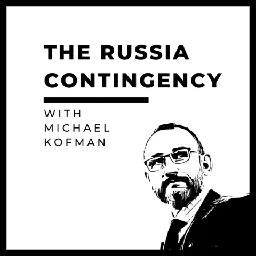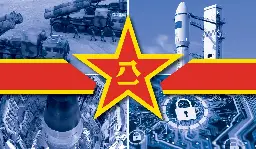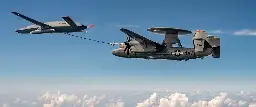Credible Defense
-
The KAI T-50 and the Boeing/Saab T-7 both use the same jet engine GE-404. How does the T-50 accomplish faster speed, more payload, all while being twice as heavy?
Yes I'm aware the KAI engine is a slight variation, but afaik it's very slight.
-
Perseverance and Adaptation: Ukraine’s Counteroffensive at Three Months
warontherocks.com Perseverance and Adaptation: Ukraine’s Counteroffensive at Three Months - War on the RocksOn June 4, Ukraine launched its long-awaited offensive. The operation has proven to be a test of Ukrainian determination and adaptation. Despite stiff
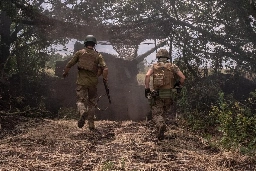
Michael Kofman and Rob Lee released another article looking at the counteroffensive's overall state three months in. If you've been paying attention to Kofman's recent Russian Contingency podcasts, this article mostly echoes these conclusions, just packaged in a format more palatable to a Washington audience. If this is interesting to you, I would also recommend RUSI's recently released assessment of the counteroffensive. It's a bit more technical but equally informative.
Michael Kofman is a senior fellow in the Russia and Eurasia Program at the Carnegie Endowment for International Peace, where he focuses on the Russian military and Eurasian security issues. He served as director of the Russia Studies Program at the Center for Naval Analyses, where he conducted research on the capabilities, strategy, and military thought of the Russian Armed Forces.
Rob Lee is a senior fellow in the Foreign Policy Research Institute’s Eurasia Program and a former Marine infantry officer
>Attrition makes for poor headlines, but it plays to Ukraine’s strengths, whereas attempting to scale offensive maneuver under such difficult conditions does not. It is, however, burdensome to resource, pressuring Washington to finally authorize dual-purpose improved conventional munitions — cluster munitions for lack of artillery ammunition available. Cluster munitions are a nasty weapon with lingering effects, but there is no other way to sustain Ukraine’s demands for artillery ammunition. This was a critical decision, extending the timeline available to give Ukraine’s approach the opportunity to succeed. They are also more effective against forces in the open and manned trenches. But the dual-purpose improved conventional munition stockpile is not just meant for the offensive. It will be used to sustain Ukraine’s war effort well into next year, until Western production increases sufficiently. This suggests that the primary factors affecting Ukraine’s offensive could still be ammunition and force availability.
>In mid-August, Ukraine appears to have begun committing elements from its reserves, including the 46th Airmobile and 82nd Air Assault Brigades. The addition of these units seems to have achieved quicker results, as Ukrainian forces liberated the heavily fortified town of Robotyne and continued to advance to the south and east. The current situation is fluid. Geolocated footage and reporting suggests Ukrainian forces, possibly a reconnaissance unit, have advanced past the anti-tank obstacles on the first part of the “Surovikin line” towards Verbove. Though it is unclear if this is just a small dismounted force, or if Ukraine has managed to breach those defenses with vehicles. Ukrainian forces have also advanced towards Novoprokopivka and its eastern flank. The Ukrainian military appears focused on further degrading the Russian defenses and widening the salient, because a narrow advance could leave its forces vulnerable to counterattacks on the flanks. The renewed assault does point to a changing dynamic, forcing the Russian military to react in order to try and stabilize the situation.
>Despite appearances, Russia is not executing a true defense in depth. Russian forces are set up for such a defense, which enables a defender to degrade the attacker as they advance, trading space for attrition. They have constructed three defensive belts, minefields in between, communication trenches, and hardened defensive points in between. This was likely Gen. Sergei Surovikin’s vision (and his name provides the nickname for these defensive lines). But Surovikin is not in charge. Gen. Valeriy Gerasimov, the chief of general staff, is. He has consistently demonstrated poor military judgment and a weak understanding of what Russian forces can and cannot do, most recently in the failed Russian winter offensive. Russian forces have chosen to defend forward of the Surovikin line, concentrating their efforts on holding the first line of defense and the towns that anchor it. To be clear, the first line does feature extensive entrenchments, including tunnel networks. The follow on lines include machine dug trenches, anti-tank ditches, dragons teeth, and likely more minefields. The Russian decision to defend forward has favored Kyiv because it allowed Ukrainian artillery to attrite the Russian units deployed.
>The course of this battle is ... increasingly determined by who has the most reserves available and who pursues the best force management strategy over time.
>Western support thus far has been sufficient to avert a Ukrainian defeat, and arguably has imposed a strategic defeat on Russia, but not enough to ensure a Ukrainian victory. Independent of the outcome of this offensive, Western countries need to be clear-eyed about the fact that this will be a long war. Taken together, Western industrial and military potential greatly exceeds Russia’s, but without the political will, potential alone will not translate into results.
-
Replicator - by John Robb - Global Guerrillas
johnrobb.substack.com ReplicatorThe race to develop massive swarms of lethal AI drones has begun. Things are about to get interesting. Let's dig in.

RSS Feed (most posts paywalled): https://johnrobb.substack.com/feed
My attempt of a TL;DR, from an already concise article:
> In one night in late August 2023, Ukraine used drones to successfully strike [7 targets]. (...) > > With this example, it’s possible to envision the future trajectory of warfare and the role AI and drones will play in it. (...) > > it gives us a glimpse into the future of proxy conflicts and civil wars (...). Future wars of this type will feature: > > - Trench warfare. (...) > - Drone warfare. (...) > - Online warfare. (...) > > (...) > > The demonstrated utility of drones in Ukraine (...) has led the US military to launch a new crash drone program called Replicator. > > - (...) Replicator is focused on rapidly developing and deploying new drone platforms (air, sea, land) that are inexpensive, plentiful, and expendable. > > - This program is justified by the claim these new drone platforms will ‘offset’ China’s numerical superiority (...) > > - (...) if these new platforms can be developed (...), it won’t be the US that employs them. Instead, they will immediately be sent to Ukraine for live testing and, if they prove effective, to Taiwan. > > What this Means > > (... this part is hard to summarize, if you reach this part of the TL;DR, I recommend reading the original)
-
Survivability and What It Means to Risk It
warontherocks.com Survivability and What It Means to Risk It - War on the RocksWargaming and conflict assessments are so en vogue that some in the Department of Defense call them the “new black.” The most recent Marine Corps
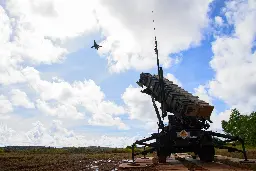
Submission Statement
Western analysts have a strong bias towards conservative estimation, one so strong that it is frequently parodied in memes about the military-industrial complex. While the perils of overestimating one's capability are far greater than those of underestimation, underestimating does carry risks of its own. This article focuses on those risks within the context of wargaming and provides recommendations for better incorporating Western advantages and a more risk-tolerant mentality into wargames, conflict analysis, and procurement decisions. The author recommends recognizing and accounting for Western personnel advantages and incorporating acceptable levels of risk into wargame designs.
Lt. Cdr. Josh “Minkus” Portzer is a P-8A weapons and tactics instructor in the U.S. Navy. The views expressed here are his own.
>In today’s wargaming, survivability is often a major currency through which a platform displays its value (expressed as relevancy) for future investments and growth within the defense budget. All military platforms have noteworthy capabilities. However, if an asset (such as a high-value plane) cannot get into an area without being destroyed, it is not seen as survivable. The concept of risk can offset the latent threat posed by a lack of survivability. The potential shootdown of a U.S. aircraft may, in general, be seen as unacceptable. Yet, if the commander is willing to accept risk, the threat of the shootdown may become tolerable. In that sense, risk can be a mitigator in the commander’s decision calculus when hedging against the question of survivability. Both concepts today feed an over-conservative characterization of the battlespace that has potential financial consequences.
>There are many military wargames and conflict scenario simulations that are robust enough to circumnavigate these mentioned pitfalls. However, the inherent danger in the Department of Defense is that these wargaming-based studies can inform investment (or theoretically, divestment) decisions. In general, this is a good thing. U.S. taxpayers should want military business decisions to be sound ones, based on studies and modeled scenarios. However, when a lack of robustness in these studies manifests (perhaps due to accidental oversights, or a shortage of manning or time, or an absence of sophisticated modeling tools), a component service of the Department of Defense may make a misinformed business decision — albeit with good intentions of doing right by the taxpayer.
>To return again to the aircraft versus missile example: If wargaming analysts retain their conservative bias towards unit-level risk and believe that the friendly aircraft is not survivable against the adversary missile, the analysts may find that the aircraft is not able to enter or adequately maneuver through the battlespace. If that is assumed to be true, then for a given anticipated conflict, the friendly aircraft may not be relevant. Now comes the survivability death spiral: If the friendly aircraft is not relevant in the next anticipated conflict, then why continue to invest in it by way of weapons, additional sensors, and other technology that may be outfitted on the platform? Alternative investment decisions then are made for other friendly platforms at the cost of the allegedly non-survivable aircraft.
>Survivability and risk will forever be bedfellows of wargaming and conflict scenario analysis — as they should be. Conflict will inevitably bring with it losses, and no country should accept loss of life or materiel with reckless abandon. Making sound strategic operational and financial decisions means rigorously studying one’s own capabilities as well as the adversary’s. At risk of invoking a timeless cliché: “Know thyself. Know thy enemy. A thousand battles, a thousand victories.” Yet as a corollary of caution, another literary work comes to mind: Miguel de Cervantes’ Don Quixote. On a quest for knighthood and in pursuit of chivalry, a comical Don Quixote fights imaginary enemies, notably making giants out of windmills. The phrase has become cemented idiomatically to represent waging conflict against exaggerated foes. It applies when one paints an enemy as 10 feet tall, but arguably, also when one paints oneself as 10 inches high. If viewing survivability through a peacetime lens of risk acceptance remains the status quo, the defense services run risk of tilting at windmills in several wargaming instances, some of which may induce the survivability death spiral for certain military assets.
>By pursuing wargaming and modeling improvements that capture a more complete definition of survivability, and recalibrating how risk is defined therein, study conclusions will be more robust, accurate, and therefore more reliable. Moreover, those conclusions will optimize the investment decisions that the Department of Defense and component services make. In doing so, the chance of tilting at windmills is lessened. Conversely, the U.S. military may better invest in the pursuit of becoming giants.
-
Attriting Russian Airborne in Bakhmut
Michael Kofman and Rob Lee released another episode of the Russian Contingency. This episode serves to broaden the focus away from the Zaporizhia offensive, focusing on sustainment, other fronts of the war, and some attempts to predict future developments. While I cannot share a publicly accessible version of this podcast, I have summarized some of the key takeaways below:
There is always a focus on large, high-tech items for equipping units of the formal Ukrainian army. But what Ukrainians need are low-tech, basic armored vehicles like the M113 for back-line roles. Similarly, units like the TDF and National Guard are often underequipped despite holding the front line against Russian armor just like regular army units. Quantity is very important for resolving both of these issues.
There are no wunderwaffen. Conflicts come down to force employment, force qualities, and force enablers--these are the sources of Ukrainian challenges so far.
Ukraine has had more success around Bakhmut, despite the presence of higher-quality Russian units there. Kofman mentions in particular the 31st Air Assault Brigade, which has apparently been pulled off the front lines. However, there are a large variety of Russian units in the area.
Bakhmut is like a punch bowl surrounded by high ground. Russia continues to hold some of this high ground, but Ukrainian advances have imperiled those. Russian entrenchments here are less elaborate than those in the south. Highly motivated and coordinated veteran units are the backbone of Ukraine's assault here.
Russian military's problems in the area began when they took Bakhmut. Wagner bore the brunt of the fighting to conquer the city, but Bakhmut is exceedingly difficult to defend as well. The reason it took Russia so long to do it was because of its failure to encircle the city with dismounted infantry(Kofman makes a direct comparison here between Russia's struggles in Vuhledar and Bakhmut and Ukraine's struggles in Zaporizhia). Russia is struggling to hold a defensively unfavorable location and losing higher-quality troops in the process.
Bakhmut was not a trap for Russian forces. Rather, this counteroffensive is simultaneously a fixing action and a manifestation of political objectives. In the process, however, Ukraine is attriting Russian airborne units, which have been seen as Moscow's strategic reserve in this conflict. Almost all of the naval infantry is on the southern front, and almost all of the airborne infantry/VDV are on the eastern front.
Attrition rate is overall favorable for Ukraine(interesting comparison to yesterday's episode, where Rob mentioned that Ukraine was likely taking heavier losses than Russia was in the south). However, Russia has a lot of artillery fires, and these fires are being concentrated on Ukrainian advances. The key issue is generating and sustaining momentum while taking attrition.
Wagner mutiny further increases political importance of Bakhmut. Wagner and supporters would be empowered by further Ukrainian advances in the area.
Ukrainians may need to commit further resources in order to continue advancing. Both sides may end up too attrited to continue further offensive operations in the area.
Steady pace of dismissals of Russian commanders may be relevant as Russia increasingly begins to look towards a rotation. Rotation of units could substantially affect their ability to defend as units are replaced with less experienced, mobilized personnel who may be less familiar with the terrain. In addition, some units from the south will likely have to be diverted to Bakhmut. However, the south will continue to be heavily defended. Ukraine's strategy of advancing on three fronts creates pressure, forces Russia to make choices, and eventually may lead to a breakthrough. Taking Bakhmut itself does not lead to much.
Dealing with attrition and recovering force quality are key battlefield enablers. Key aspect of this is making the choice to attrite or preserve units in the first place, as with Ukraines original choice to defend Bakhmut. One argument one could make is that this denied Ukraine the ability to take veterans from those brigades and deploy them in the south. The moment Russia took Bakhmut, however, the balance shifted, and now Bakhmut is an opportunity for Ukraine to inflict attrition on Russian units. Territorial movements may be modest but offensive may succeed in sapping Russian capabilities for offensive action in the future.
In the South, mix of units, including Storm Z, mobilized, naval infantry, Spesnatz, etc. Attrition to some of these groups is more sustainable than others. Hard to assess who is taking attrition from OSINT. Ukraine has an advantage in tube artillery, Russia has an advantage in rocket artillery. Russian advances may be stymied by lack of artillery overmatch.
Ukraine has enough artillery shells for this offensive--but what about after. US and EU have not scaled up ammunition production sufficiently to match Ukraine's monthly use rate. Ukrainian has been supplied from stockpiles, but that is not an infinite resource. Artillery ammunition supplies may be the most important facet of this war for both sides.
Russian fires will also be restricted as their stockpiles run out. Kofman makes a "wild" guess at Russia being able to produce about a million artillery shells of their most common caliber per year. This will dramatically constrict their rates of fires. Ukrainian fires cannot come from quantity, they have to make up the difference in quality.
Ukrainian infantry are pound-for-pound better than Russian infantry up to the company level. As long as they have the supplies, they will outperform expectations. That hasn't been the case in the past five weeks of the offensive. Russia is fighting more competently than before.
Pressure to negotiate comes up against the questions of with who and what. Russia has shown no signs that they are willing to negotiate. Russia is unlikely to give up any of the territory it has formally annexed, and Ukraine has no reason to consider accepting that. A premature peace may just be an interlude until a second war breaks out. Battlefield developments have not led either side to feel like they need to make concessions. This is already a long war, and it's likely to go on, even after the decisive phase of war has passed.
Military sustainment and Western will are critical. Ukrainians will take any vehicles at all. Even Toyota Hiluxes will do, but extra protection is in particularly short supply. Much of this is out of Ukraine's control. Every time Ukraine has had to retreat, it has been because of Russian fires dominance. As long Ukraine has supplies of artillery shells, further Russian advances will remain unlikely.
DPICMs have risks, but they are particularly good for disrupting Russian armor concentrations.
Be careful of anecdotal evidence. Mobilization has resulted in a flurry of embarrassing stories for Russia--video appeals, mass shootings, etc. But mobilization also saved Russia's position in this war and allowed them to hold their lines. Without it, they may have lost by now. Hopes that Russian forces would collapse despite all the negative reports. Despite horrific anecdotes about mobilization, minimal domestic pressure to end the war. Domestic upheaval is possible and would have major impacts on the war.
NATO/US must take a longer view of things. War will likely go on for 1 or more years. May be good to pull veterans off the front lines and send them abroad for better training.
Shoigu and Gerasimov have not done particularly well and do not command much respect in the Russian military. One of the side effects of the mutiny is that Putin cares more about loyalty than before. Seliverstov was removed despite his competence, possibly because he worked closely with Wagner, and therefore his loyalty was under dispute. Russia has generally moved to more competent commanders through this war, but the coup attempt threatens to reverse that trend. Surovikin is arguably responsible for Russian success--if he had not been in charge, its possible Russia would have fared far worse. Now his position is in jeopardy. Loss of competence in favor of loyalty is a long-term factor for Russia.
This offensive has not failed. Ukrainian military has a theory of success and will fight it the way they know best from this point forward. It will stretch out through and beyond the summer. To the extent that the West can sustain and provide the support they need, it will have real impacts.
More episodes coming soon with other members of the team that traveled to Zaporizhia.
-
Ukraine Struggles to Scale Offensive Operations
warontherocks.com Ukraine Struggles to Scale Offensive Combat Operations - War on the RocksOn this special sneak peak of the Russia Contingency, Mike sat down with Rob Lee, a senior fellow at the Foreign Policy Research Institute, to discuss the

The Russia contingency has posted a special 2-part episode . Part One can be found here and is publicly available. Part Two is available only to War on the Rocks members, but I have summarized key takeaways below. I recommend listening to Part One first, then reading through Part Two for the in-depth analysis.
Key Takeways
The counteroffensive was practically prosecuted by company-sized elements. This resulted from the Ukrainian military's struggles with coordinating actions above the battalion level. The military tends to rely on sequencing rather than coordination and struggles to deal with setbacks.
Dearth of experienced officers and veterans as a result of losses and massive expansion of the army. Leaders were unwilling to give up valuable personnel for staffing the new brigades. Stars who did go came with drawbacks of their own--see 47th Brigade. New brigades struggled to attract talent due to these factors.
Need to take a critical look at the idea of standing up wholly new brigades as opposed to having continued to work and train within existing forces. More experienced brigades have shown better results than newer force organizations across all three theaters. The jury is still out on the new brigades, but the concept needs scrutiny.
"You go to war with the army you have", but you also have to use the army you have, not the army you would like to have. Ukraine relies on artillery fires to enable their maneuver. Trying to adapt to a radically different doctrine put the Ukrainian military in a difficult position. Western maneuver doctrine has advantages but does not necessarily work for Ukraine given what they have available.
Pulling back veterans for counteroffensive training, then supplementing them with newer troops as support would have been a better strategy, even if doing so means pulling out of Bakhmut quicker.
The early hours of the counteroffensive were crucial--most artillery, least prepared Russian forces, etc., etc. Veteran brigades might have been able to push through the stumbling blocks that derailed the newer personnel that were at the tip of the spear.
Rob Lee offers a bit of nuance to a surprisingly unambiguous Kofman. There is no risk-free option here. If Ukraine had tried to pull back veteran units over the winter, there's a real possibility that they would have lost more terrain elsewhere.
This is a very good Russian defense. Even with veteran brigades and fully equipped troops, it's not clear that the counteroffensive could have reached all the way to Melitopol, or even to the main defensive line. No guarantee the alternative would
Back to Kofman. Against such a prepared defense, a combined arms offensive was unlikely to succeed without enabling factors like air superiority. In fact, even most Western militaries lack the resources to perform such an operation without the US leading the way in the integrating role.
The offensive is far from over. Just because the initial offensive was unsuccessful, doesn't mean the whole offensive will be a failure. New brigades have combat experience, will make changes. There is going to be tactical adaptation.
Ukrainian fighting is dependent on infantry advances. Platform-based demining is less important than man-portable demining equipment. Present Ukrainian techniques clear narrow lanes that choke logistics and cannot permit vehicles. Infantry systems like APOBs would be much more effective and efficient.
Current fires are not meant to pull apart command and control, though some Storm Shadows have been used to that effect Attrition has worked for Ukraine in the past. and it may work here.
Don't expect mechanized maneuver to make a sudden appearance anytime soon. Ukrainian tankers have learned that massing armor is a lethal mistake. Most tanks on both sides are used in indirect fire and infantry support roles. Anti-tank roles are carried out by infantry and artillery. Tanks operate in pairs, one firing and the other providing overwatch and support. Tank brigades seem to be nascent and not present in this fight. Even a substantial breakthrough will struggle to gain momentum. Western expectations of how Ukraine will employ its forces don't align with Ukrainian takeaways from the last year and a half of war.
Rob Lee: Relative attritional balances are hard to predict from OSINT data. The side on the offensive tends to take heavier losses and that is likely true in this case, but open source data on losses shows clear successes in Ukrainian counterbattery and high-value targeting. Ukrainian ability to field UAVs behind Russian lines is a positive sign. But a significant breakthrough is far from guaranteed.
Russia has enough UAVs to maintain constant overwatch of the frontline. Able to interdict masses of armor. Lower fires does not necessarily mean Russia is running out of shells--they are holding them in reserve for when they see the most threat.
Terrain is very good for observation and therefore long-range ATGMs. Russian helicopters and glide bombs are another pain point.
Infantry advances reduce casualties, but slow everything down. Places a heavy burden on individual soldiers due to the inability for vehicles to penetrate with infantry. 47th Brigade has begun advancing after pivoting to infantry advance, but this is measured in hundreds of meters.
The major constraint is artillery ammunition. If there is not a quick enough advance, Ukraine will run out of shells before they reach their objectives.
Ukraine continues to hold an advantage in small squad tactics.
Kofman: DPICMs are all about the numbers. Buys the Ukrainian army time to fight into the fall. Sense is that Ukrainians are determined, learning. They are nasty weapons, but there is no other stockpile to be given to Ukraine.
Just because the West stops giving Ukraine the capacity to stop the war, does not mean that Russia will suddenly stop the war. If anything, they will try to press their advantage even harder. The position that Ukraine should get Western support until the first unsuccessful offensive does not make any sense.
Ukraine needs nightfighting capabilities, man-portable capabilities, and to push those things all the way down, even to units that may not be part of the traditional army structure like National Guard.
Ends by recommending a series of articles that Kofman has also shared here.
-
Navy Raises Battle Force Goal to 381 Ships in Classified Report to Congress
news.usni.org Navy Raises Battle Force Goal to 381 Ships in Classified Report to Congress - USNI NewsThe Navy is now more than 80 ships short of the latest estimate of what the sea service thinks it needs to fulfill the Biden administration’s national security strategy. The Battle Force Ship Assessment and Requirement, a congressionally-mandated report, requires 381 ships, up from 373 in the 2022 r...
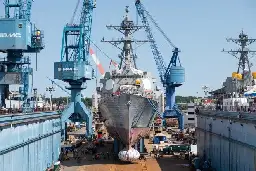
Submission statement
There has been a significant amount of consternation about Chinese shipbuilding capacity versus American yards. While part of the issue arises from the cost of materials and labor and protectionist policies, another major cause is the diminished and erratic pace of naval ship acquisition. The end of the Cold War and shift to the prosecution of land wars in Iraq and Afghanistan led to cutbacks in naval acquisition, leaving contractors in the lurch. Now, as the Navy attempts to ramp up acquisition, it is finding that the capacity it requires simply no longer exists. This article speaks to the urgency of the Navy’s efforts to build up, as well as the difficulties lying before it, not least continuing restraints on expenditure such as those imposed by the debt ceiling compromise negotiated earlier this year.
Sam LaGrone is the editor of USNI News. He has covered legislation, acquisition and operations for the Sea Services since 2009 and spent time underway with the U.S. Navy, U.S. Marine Corps and the Canadian Navy.
>The Navy is now more than 80 ships short of the latest estimate of what the sea service thinks it needs to fulfill the Biden administration’s national security strategy.
>The Battle Force Ship Assessment and Requirement, a congressionally-mandated report, requires 381 ships, up from 373 in the 2022 report, the first year it was released. As of Monday, the Navy’s battle force was 299 ships.
>More recently, the Navy has been more reluctant to be as bold and public about what it needs, naval analyst Bryan Clark told USNI News.
>“There’s a big question on why not be public on the number,” he said. “The Navy has been in the mode to obscure what it needs to do because they are under budgetary constraints and can’t meet those goals.”
-
Modi’s visit to France and Europe-India ties
www.brookings.edu Modi’s visit to France and Europe-India ties | BrookingsOn July 11, the Brookings Institution will host a webinar to discuss Indian Prime Minister Narendra Modi’s upcoming visit to France, the development of ties between India and Europe, and how the China and Russia factors are shaping these dynamics.
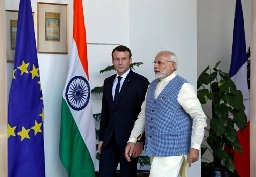
Submission Statement
As Prime Minister of India Narendra Modi continued his globe-spanning tour by stopping in France for Bastille Day celebrations, his country approved the purchase of French submarines and fighter jets. This deal is indicative of pressures India faces as its primary weapons supplier further aligns with its rival, China. It is also indicative of Western ambitions to incorporate the historically neutral India into the broader liberal international order. This virtual discussion, while predating Modi's visit and the clearing of the arms deal, provides valuable insights into the motives, conditions, and points of friction that surround India and France's deepening strategic partnership.
Key Takeaways
French partnership is unique for India in its strong defense component--relations with Germany and Japan are also very strong but lack defense cooperation.
China is the key catalyst on both sides of the exchange--driving India to construct a more nuanced foreign policy with regard to Europe and vice versa.
Ukraine is a stumbling block for Euro-Indian ties, but it has also had an accelerating effect as countries make comparisons to current situations in the Indo-Pacific.
France is unlikely to push India on its increasingly antidemocratic tendencies, but the tension there does exist.
Trilateral partnerships are gaining increasing heft as India and the West work together to bolster smaller nations through a variety of global upheavals.
Indian bureaucracy continues to hinder bilateral and trilateral initiatives in areas like civil nuclear cooperation.
-
POTUS approves mobilization of 3,000 reservists
www.defense.gov Biden Approves Mobilization of Reserves to Support EucomPresident Joe Biden issued an executive order approving the mobilization of select reserve forces with up to 3,000 personnel, augmenting the armed forces in support of Operation Atlantic Resolve.
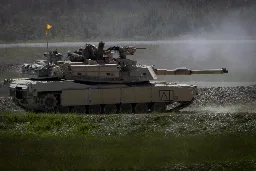
-
PRC Writings on Strategic Deterrence: Technological Disruption and the Search for Strategic Stability
Submission Statement
Chinese perception of the global strategic balance and their place in it has undergone remarkable shifts in recent years. As the country has grown increasingly capable and assertive, thought leaders' opinions on the best means of deterrence have shifted as well. This report from the Center for Naval Analyses examines writings from 2015 through 2020 to chart the ways that Chinese perceptions of strategic stability and strategic deterrence have shifted. Strategic stability, according to Chinese thinkers, is a state where rational actors have no reasons to use force against one another. Strategic deterrence here is a bit more fuzzy--some writers use it narrowly in the Western sense, while others extend the word to include the capacity to change the status quo to China's benefit as well. It is important to note that the existence of stability or deterrence does not require balance; on the contrary, thinkers recognize that China has been able to achieve deterrence and stability even with a relatively limited nuclear arsenal compared to other great powers. As long as all parties remain mutually vulnerable to one another's strategic weaponry, stability can be preserved. It is this mutual vulnerability that Chinese thinkers are particularly concerned about, as new technologies disrupt traditional thinking about what constitutes a strategic weapon or reduce the effectiveness of the enemy's strategic arsenal. In order to combat this, they recommend further investment in China's second-strike capabilities, improving non-nuclear strategic capabilities, and even a few suggestions of revising China's no-first-use policy. The report also highlights a worrying trend of confidence expressed by experts in China's ability to predict the levels of commitment and escalation the US is willing to employ in various situations--a confidence that is dangerous from an overall escalation management perspective.
If this paper was interesting to you, I would also recommend another recent submission, on Chinese expert assessments of various countersanctions strategies. The commonalities between Chinese views of strategic deterrence and economic resiliency have interesting parallels, most clearly in the shared thinking on asymmetric deterrence.
This report was written by CNA’s China and Indo-Pacific Security Affairs Division (CIP).
>This paper examines recent writings from the People’s Republic of China (PRC) and the People’s Liberation Army (PLA) in order to highlight major themes and evolution in concepts of deterrence, strategic stability, and escalation control, particularly between 2017 and 2022.
>PRC writings during this period display growing concern that innovations in military technology over the past several decades undermine strategic stability. Many PRC authors argue that the balance of military capabilities that enabled China to maintain a fairly small nuclear deterrent is becoming more fragile, and that as a result, Beijing can no longer be confident in its ability to deter other countries from attacking China with nuclear or other strategic weapons.
>This paper provides a baseline for understanding, from a conceptual perspective, how PRC authors frame the challenges that these dynamics pose to China’s strategic deterrent and to strategic stability, and the implications they may have for Beijing’s approach to strategic capabilities.
-
Charting the Military’s Path Across the Technology Valley of Death Using Bar Napkin Math
warontherocks.com Charting the Military’s Path Across the Technology Valley of Death Using Bar Napkin Math - War on the RocksDepartment of Defense leaders, technology developers, self-proclaimed innovators, and many others are obsessed with the apparent lack of adoption and slow
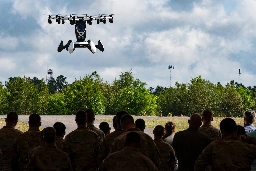
Submission Statement
A common refrain from the public and politicians alike is that the US military fails to adopt to new technologies widely available to the public. Products such as quadcopter drones and AI are frequently pointed to as evidence that the Department of Defense(DOD) ought to reform its acquisition processes in order to more rapidly integrate consumer/off the shelf(C/OTS) components. However, this approach fails to consider that integrating civilian technologies into military systems is not free of cost and that the requirements for military use are drastically different from that of the consumer market. Furthermore, it is important to recognize that not every defense project that fails to translate to an operational program is a failure and that many of the technologies that today appear as no-brainer C/OTS alternatives were originally seeded or nurtured by early investments by the DOD. This article puts numbers to these assertions and shows with a few ballpark estimates that the cost of innovation required to constantly integrate new technologies is far greater than most imagine and would require cutting into other essential aspects of readiness in order to sustain. The author concludes that the DOD should continue focusing its energy and resources on research and development while implementing reforms to assess what early-stage technologies show the most promise earlier in their life cycle.
Ray Khan is a 28-year veteran of the U.S. Air Force. Duties performed include engineer, program manager, tester, technologist, intelligence, information operations, search and rescue controller, electronic warfare operator, military diplomat, acquisitions professor, and innovator.
>Department of Defense leaders, technology developers, self-proclaimed innovators, and many others are obsessed with the apparent lack of adoption and slow speed of integrating new technology into the military. There are many reasons that Defense Department “innovators” can point to for this apparent lack of adoption, ranging from the budget process to how the military sets requirements for new weapons developments to a whole host of bureaucratic and cultural challenges embedded in the acquisition process.
>Many Department of Defense leaders and innovators incorrectly focus on increasing the transition rate of new technology into military operations. I will show, with simple bar napkin math, that increasing the technology transition rate is not fiscally feasible. The best path for the military is to continue to fund as much technology development as the budget allows and then conduct internal research and analysis to transition the technologies that will have the greatest “implementability” and “bang for the buck.” Based on my math, I believe that a sustainable technology transition rate for the military is between 1 and 10 percent. Also, the percentage of projects successfully fielding is even smaller depending on Department of Defense plans and resources, and advancements by America’s adversaries.
>I believe the Department of Defense cannot hamstring its technologists and needs to continue to fund as many research and development projects as possible, even if most of the technologies will not transition. During the early stages of a technology development project, the Department of Defense will likely not be able to accurately and/or methodically figure out a project’s value (bang for the buck). More importantly, the military needs to let its technologists mature the projects for two to five years with a “fail fast” mindset, while “desired” technology projects may be allowed a longer maturation schedule. Once technology development projects start to prove their legitimacy, the Defense Department needs its innovators to start doing the hard work of research and analysis to assess the projects implementability and sustainability. This assessment will determine a project’s value (bang for the buck) and allow for the worthiest projects to move forward towards successful fielding.
- www.csis.org European Warfighting Resilience and NATO Race of Logistics: Ensuring That Europe Has the Fuel It Needs to Fight the Next War
Russia’s war in Ukraine demonstrates the importance of logistics. More interoperable logistics, including fuel storage and distribution, underpin NATO forces’ readiness and ability to operate in contested environments while maintaining forward defense on the eastern flank.
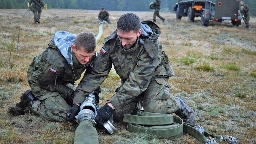
Submission Statement
NATO's newly announced "defend every inch" policy will require massive investment into logistics and sustainment to come to fruition. Food, fuel, equipment, and soldiers will have to be moved from West to East in enormous quantities on extremely short notice. The war in Ukraine has shown the preparation of the networks and infrastructure required in peacetime is critical to their successful operation during a war. With this in mind, NATO has begun laying the foundations for a vastly increased commitment in Eastern Europe. This article from CSIS follows just one aspect of that commitment, the shortfalls in fuel supply to Eastern Europe. It notes that eastward fuel supplies have been neglected after the end of the Cold War, but that a number of countries have demonstrated a renewed interest in the issue in recent year. It also sets out a series of steps NATO planners can take in order to secure fuel logistics against a potential invasion: providing Ukraine with energy and logistical support, identifying strategic vulnerabilities in fuel supply and mitigating critical shortfalls, optimizing joint logistics on the eastern flank and fortifying frontline states, developing a resilient and adaptable NATO fuel infrastructure, enhancing intermediate-level operational logistics, prioritizing fuel support requirements and operational energy needs, exploring alternative operational energy solutions, and integrating collective and national energy resilience requirements.
Anna M. Dowd is an adjunct fellow (non-resident) with the Defense-Industrial Initiatives Group at the Center for Strategic and International Studies (CSIS) in Washington, D.C. Dominik P. Jankowski is a policy adviser in the Office of the NATO Secretary General. Cynthia R. Cook is the director of the Defense-Industrial Initiatives Group and a senior fellow in the International Security Program at CSIS.
>The North Atlantic Treaty Organization’s (NATO) initial response to Russia’s brutal war against Ukraine signaled a commitment to strengthening deterrence and defense posture. Yet, the conflict highlighted capability gaps, readiness shortfalls and problem points across the alliance, including ever more contested logistics, vulnerable transport infrastructure, and growing energy insecurity. The need to meet these looming and often-overlooked challenges is acute. Left unchecked, they could weaken the alliance’s collective resilience and undercut efforts to provide continuous military support to Ukraine, stopping the military momentum on the ground from shifting decisively in its favor. One fundamental component of warfighting capability underpinning all others is operational energy broadly and fuel specifically, both in peacetime and wartime. Efforts to increase the readiness and enablement of NATO forces should therefore explicitly take into consideration the logistics implications and the compounding effects of rising logistics requirements, including fuel. Enhanced ability to operate in contested environments as well as maintaining forward defense on NATO’s eastern flank will result in higher fuel consumption and, in turn, will require a larger logistics footprint. Thus, increasing operations energy capabilities, including storage and distribution, and reducing risks associated with the lack of or dependence on vulnerable supply lines are critical supporting capabilities for the future fight.
>This war demonstrates that meeting wartime demands in a large-scale conflict benefits from prior peacetime investments and clearly defined targets, as well as from better integration of logistics into strategic planning. Military planning for NATO collective defense can take insights from the current conflict and ensure that these considerations are part of the implementation for the deter and defense strategy and the decisions to conduct geographically specific regional plans, as well as functional strategic subordinate plans (SSPs)—in particular, the SSP for enablement. The urgency to solve real problems at scale through adapting and improving fuel supply logistics is not only fundamental to building capacity along Europe’s eastern flank to address Russia’s military threat but also to an expanded U.S. force posture that requires sustained access. Effective logistics across national borders will depend on the integrated effect of every ally. The Vilnius summit offers the alliance leaders the opportunity to collaborate on an approach to identify challenges and to resolve logistics burden-sharing. A comprehensive approach including a NATO Resilience Planning Process and adequate investments would bolster collective resilience in Europe. Ensuring that Europe has the fuel it needs to fight the next war could usefully be the first application of this approach.
- www.csis.org Cluster Munitions: What Are They, and Why Is the United States Sending Them to Ukraine?
CSIS's Mark Cancian breaks down the United States’ recent announcement to send cluster munitions to Ukraine. Although the munitions are highly effective against area targets, they are controversial because due to their high dud rate endangers civilians.
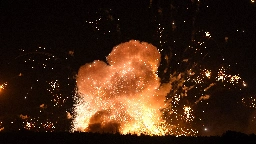
Submission Statement
The United States’ decision to begin handing over its stock of “Dual Purpose Improved Cluster Munitions” (DPICM) has resulted in a flurry of interest surrounding this new form of aid and its capabilities. This article from CSIS provides answers to common questions surrounding cluster munitions. In addition, it addresses some of the concerns supporters and opponents of this move might have about its political viability. My one quibble with the article would be the estimate of the unexploded ordnance (UXO) that will be generated by this aid package. Assuming that the 2% dud rate will be realistic in combat conditions is overly generous. However, the general gist of the argument is correct, Ukraine will have a massive UXO problem, whether or not it receives DPICM rounds.
Mark F. Cancian (Colonel, USMCR, ret.) is a senior adviser with the International Security Program at the Center for Strategic and International Studies in Washington, D.C. In the U.S. Marine Corps, he was an artillery officer and fire support planner, during which time he employed cluster munitions.
>The United States has announced that it will send cluster munitions to Ukraine after weeks of internal debate and public speculation. Ukraine has asked for these munitions, which are highly effective against area targets such as infantry, artillery, and truck convoys. However, the munitions are controversial because of high dud rates and the resulting danger to civilians. The munitions will help Ukraine’s armed forces as they continue their counter-offensive, but they will not be a game changer.
-
Western armies are learning a lot from the war in Ukraine
Submission Statement
Warfare is a continuous learning process, both for the parties to the conflict, and for those merely observing. This article provides a summary of western perceptions on takeaways from the war in Ukraine. Specifically, it finds the keys to the modern battlefield are ever-better sensors and shooters. Dispersion and concealment are the best means of protection, but these come with logistical and organizational constraints. I would add a fifth lesson to those stated here: the importance of information operations to successful mobilization and morale. Steven Kotkin in particular loves to point out that Ukraine is effectively being governed by a TV production company, to enormously successful results. Western governments have been slower to adapt, but have also managed to pick up a touch of flair themselves.
This article is the seventh in a series by the Economist focused on lessons learned from the Ukraine war. The articles are written for a layman audience, but even dedicated watchers can derive value from the interviews and novel information sprinkled throughout. I plan on posting them in sequence here, and the full set of 7 articles can be found here.
Shashank Joshi is The Economist‘s defence editor. Prior to joining The Economist in 2018, he served as Senior Research Fellow at the Royal United Services Institute (RUSI) and Research Associate at Oxford University’s Changing Character of War Programme.
>Western armies are busily identifying what lessons they can find from Ukraine. Every two weeks the British army collects data from the battlefield and from Wiesbaden in Germany, a hub for supporting Ukraine. A “Russia-Ukraine Insights Hub” led by Rear Admiral Andrew Betton has written a highly classified 70-page report. “It’s reinforcing some age-old lessons,” says the rear admiral. “Resilience is one of the core strands that comes out of our work: the resilience of your military, the resilience of your industrial base, but fundamentally the resilience of your society.”
>First, the modern battlefield can be an unsparing place. Modern sensors can see things with unprecedented fidelity. Modern munitions can hit them with unprecedented precision. Artificial intelligence, whether on board a drone or in a corps hq, fuelled by torrents of data, can identify and prioritise targets with unprecedented speed and subtlety. But Western armies are not optimised to master these technologies. America’s years-long procurement cycle is “fine for tanks or helicopters”, says T.J. Holland of America’s XVIII Corps, but “too slow to keep up with the pace of cyber”.
>Second, armies that want to survive must disperse, hide and keep on the move. Camouflage and deception are back in vogue. Headquarters must shrink in size, frequently change location and mask their radio emissions. “I haven’t met a soldier who hasn’t learned something from our Ukrainian partners,” says Major-General Chris Barry, director of the British Army’s land-warfare centre. “The way they dig their positions…it drives [our] standards up.” One official notes that Ukrainian troops, having learned the hard way to minimise electronic signatures, do not switch their mobile phones on even in the English countryside.
>Third, technology is pushing firepower and intelligence further down the chain of command. A platoon with access to Ukraine’s Delta app, loitering munitions and Starlink terminals can see and strike targets that would once have been the preserve of higher echelons. “This journey of combining arms is getting lower and lower,” says General Barry, pointing to Russia’s failure to seize an airfield north of Kyiv on the war’s first day. “The defining act at Hostomel, the destruction of the first aircraft that really unpicked the Russian assault, was probably done by an individual with a phone, a Stinger [missile] and a drone.”
>This has many implications. It will complicate logistics: how do you push food, ammo and medical care to a larger number of smaller units that are increasingly spread out? It will change recruitment and training: soldiers need more initiative, technical knowledge and skill. It is also an opportunity. Armies once had to concentrate forces in one place to achieve mass. Now they can deliver the same effect in a decentralised way. The US Marine Corps, which is pushing precision weapons down to squads of 13 people, is reorganising itself on these principles.
>There is a fourth lesson, too. Technology can make war more efficient. But if both sides have the technology, even a highly efficient war is likely to involve enormous costs in blood, metal and treasure. Armies without the size and depth to absorb losses and remain viable on the battlefield may find that no amount of digital wizardry or tactical nous can save them
-
Envisioning a Multirole Future for the MQ-25
Submission Statement
Shrinking budgets and the increasing cost of naval planes and pilots have driven the US Navy to pare down its inventory to a few multirole fighters. The rise of larger UAS and their promise of increased customizability and affordability could possibly flip that dynamic on its head. This article offers a number of possible roles for a future version of the MQ-25, which is currently only designed for refueling. To do so, it draws on historical naval multirole aircraft, as well as strategies drawn from other branches of the force. The resulting article is a valuable resource on historical naval aviation, a reminder of the gaps that have yet to be filled in the modern USN inventory, and a demonstration of the flexibility that cheaper, more attritable capabilities can bring to a force.
Josh Hano is a junior-grade lieutenant in the US Navy.
>At the Naval Institute’s July 2022 “Maritime Security Dialogue: Naval Aviation Update,” Rear Admiral Andrew J. Loiselle, director of the Air Warfare Division on the staff of the Chief of Naval Operations (OpNav), articulated what has long been discussed regarding the MQ-25 Stingray, stating that it will initially be a tanker, but that the Navy has “not nailed down an exact concept of operations.”1 The MQ-25’s initial performance goal is to deliver 16,000 pounds of gas at a distance of 500 nautical miles (nm) from the carrier.2
>Much ink has been spilled in Proceedings on the possibilities of this aircraft, but most of it has discussed those possibilities in speculative terms or in broad strokes concerning unmanned naval aviation in general.3 Others have thoughtfully proposed specific ideas on what the future of unmanned carrier aircraft should look like.4 More recently, a group of authors made clear the MQ-25’s value as a tanker and the prominent role it will play in enabling deep-strike missions for the air wing.5
>Many have advocated for the MQ-25 to serve as a deep-strike asset, citing its low-observable features, long range, and lack of a human pilot in harm’s way.6 Indeed, some have argued that the MQ-25 would revive the deep-strike mission that the Navy lost when the A-12 Avenger program was canceled in 1991 and the A-6 Intruder was retired in 1997.7 Although the A-6 and the A-7 Corsair II performed superbly in attack roles, their range and payload were greater than anything the MQ-25 seems likely to demonstrate in the near future. Going back to the 1950s and ’60s, the A-3 Skywarrior and A-5 Vigilante evolved their focus on attack to emphasize refueling, electronic warfare, intelligence surveillance, and reconnaissance.
>There are, however, incremental changes that could be made to the MQ-25 or a similar, follow-on platform and the associated concept of operations. Instead of pining for a stealthy, carrier-based unmanned aerial combat vehicle with long-range, capacity for heavy payloads of weapons and sensors, and greater maneuverability than modern fighter aircraft, the Navy should evolve the MQ-25 to complement—not replace—manned aircraft currently on the flight deck.
-
Chinese Assessments of Countersanctions Strategies
interpret.csis.org Chinese Assessments of Countersanctions Strategies - Interpret: ChinaDrawing on newly translated scholarship, leading experts examine how Chinese analysts are assessing U.S. sanctions strategies and what countermeasures they see as available to Beijing if sanctions are imposed on China in the future.

Submission Statement
While the debate over their effectiveness is still far from settled, sanctions have rapidly assumed a prime position in the Western toolkit. In turn, nations that believe themselves to be at risk of being sanctioned have increasingly begun taking measures to isolate themselves from potential negative impacts. Three newly translated texts from Chinese scholars provide us insight into how China views the threat of US sanctions as well as the perceived effectiveness of the measures China is currently undertaking to "sanction-proof" its economy. Analyses of these analyses are also provided by a trio of relevant experts.
Striking similarities between all three articles include a reluctance for China to assume a hegemonic role in the global financial system or even to challenge the US dollar's primacy in global finance. This was a surprise to me personally, as I had assumed that establishing China as a rival center of international finance would be key to Chinese sanction-proofing. However, the experts recognize the costs associated with underwriting the world economy and are therefore reluctant to sacrifice the relative freedom they have with the current renminbi. They also seem muted about financial decouplings from the US, such as the forthcoming Chinese digital currency and possible sales of US financial instruments. Rather, the authors emphasize that China's best defense against sanctions is to increase global dependence on Chinese industry so that any sanctions would come with unacceptable economic costs. This call for further globalization in response to sanctions is encouraging, given China's recent inwards, protectionist turn. Even if it is for self-serving reasons, greater Chinese integration with the global economy will mean a greater incentive to avoid rocking the boat on issues such as Taiwan. However, I am skeptical that this will work out as well in practice. China wishes to become more self-sufficient internally while increasing dependencies externally, all while growing more assertive on the global stage. The two goals are at cross purposes with one another--protection increases internal costs while globalization requires the cheapest goods available. Perhaps China can thread the needle, but it seems unlikely to work for long, especially as countries wise up and begin implementing protectionist measures of their own.
Karen M. Sutter is a senior analyst with over 30 years of experience working on U.S.-Asia policy issues and crosscutting economic, political, technological, and national security issues in government, business, and the think-tank community.
Michael Hirson is the former U.S. Treasury Attaché to China (2013-2016)
Meg Rithmire is an F. Warren MacFarlan Associate Professor, Business, Government, and International Economy Unit at the Harvard Business School
-
Michael Kofman Takes Stock of the Ukrainian Offensive
warontherocks.com The Russia Contingency with Michael Kofman Archives - War on the RocksA bi-weekly podcast featuring in-depth analysis of Russia’s military power and the war in Ukraine, with your favorite expert on the topic.
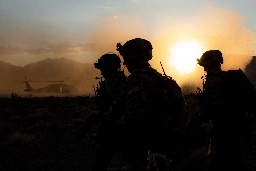
Submission Statement
Michael Kofman has released a new episode of the Russian Contingency. Unfortunately, I have no way of sharing the episode, but I have summarized some of the key points he made below.
-Ukraine has made incremental gains along all three axes of the counteroffensive, most notably Bakhmut.
-Bakhmut is difficult to defend, but has lots of political significance--good target for a fixing action.
-Offensive is well underway--no longer a probing attack. Not going as well as Ukraine had hoped. Pivoting to an attritional approach.
-Forces that have been committed are a mix of forces--Western-trained, regular units, even TDF.
-Train-and-equip approach, trying to pivot Ukrainian units to combined arms, has struggled. Ukrainians cannot mass without support equipment to get through defenses. Ukrainians continue to sequence operations as opposed to combined arms tactics
-DPICMs are a big deal--more important than ATACMS or F-16s. Artillery munitions supply is the sand in the hourglass, so DPICMS takes time pressure off of Ukrainian forces. Quantity is more important than quality here.
-Territory taken is a lagging indicator--the real determinant is attrition, the levels of which are unclear.
-Kofman is skeptical that Russians plan to damage ZNPP, believes it is a product of Ukrainian anxiety after the Khakova dam breach.
-The recent flurry of nuclear signaling by Russia is puzzling in terms of timing, motive, and relevance. Russia is not losing ground or in a situation where it might actually try to use nukes. The people doing this are not the most relevant to decision-making in the Kremlin. Russian nuclear force posture has not changed in conjunction with messaging.
-Nuclear weapons are significant even in conflict like this--they force the other parties involved to be careful about escalation. Allowed Russia to keep the war localized(horizontal escalation) and contained(vertical escalation).
-However, Russia is finding that nuclear weapons are not useful for compellence, and the later in the war it gets the less Russia can squeeze out of its nuclear signaling. Same lesson the Soviets learned.
-Prigozin's attack ended up as a "mutiny-plus". Still questions about the levels of passive support within Russian military. Wagner was pulled back from the front, so short-term impacts are low. Still questions over who will take over operations in Africa and elsewhere.
-Putin's regime is not Stalin's. Don't expect purges. But Putin is dealing from a position of weakness right now, and that won't last forever. The current deal with Prigozhin is unlikely to be the end of the story.
Michael Kofman is a Senior Fellow at the Carnegie Endowment and a Principal Research Scientist at CNA, focused on Russian military & defense analysis.
-
How oceans became new technological battlefields
Submission Statement
Much like the air and land war, the naval theatre of the war in Ukraine has been characterized by the success of denial and deterrence technologies against traditional implements of concentrated force. While the Moskva is the flashy example of this, I'd argue that its sinking was a bit of a fluke, and even a distraction from the real impact of AShMs and sea mines--which is their strong deterrence effect on the fleet more broadly. Keeping the Russian fleet at bay from Ukraines shores has allowed the country to continue using its southern ports, which have proven to be a vital economic lifeline for both itself and the global South. By contrast, Ukraine's USV attacks, which appear aimed specifically at attriting Russian naval capability, have had only limited or symbolic impacts thus far. This article provides an overview of the current state of the naval war, and how Ukrainian tactics and Russian counters to them are developing.
If you'd prefer mostly the same info in a video/podcast format, Perun's video on the sinking of the Moskva is an excellent primer to many of the same issues discussed here.
This article is the sixth in a series by the Economist focused on lessons learned from the Ukraine war. The articles are written for a layman audience, but even dedicated watchers can derive value from the interviews and novel information sprinkled throughout. I plan on posting them in sequence here, and the full set of 7 articles can be found here.
Shashank Joshi is The Economist‘s defence editor. Prior to joining The Economist in 2018, he served as Senior Research Fellow at the Royal United Services Institute (RUSI) and Research Associate at Oxford University’s Changing Character of War Programme.
>The inflection point came on April 14th 2022, when Ukraine sank the Moskva, a Russian cruiser, the largest loss of a warship since the Falklands war in 1982. The Black Sea Fleet promptly moved back and is still 100-150 nautical miles off the Ukrainian coast, says Admiral Neizhpapa. That has lifted the threat of an amphibious assault on Odessa: anti-tank obstacles that once guarded roads have been pushed aside and soldiers sent to other parts of the front. And it paved the way for a deal in July whereby Russia agreed to let Ukraine keep exporting grain. This helps not only Ukraine, 70% of whose pre-war trade went through the Black Sea, but also grain-importing countries of the global south.
>There was nothing revolutionary about the Moskva operation. “To me, it shows the importance of proper land-based anti-ship missiles, sea mines and good intelligence,” says Niklas Granholm of FOI, Sweden’s defence research agency, “all put together in a coherent operational concept.” Luck played a role: atmospheric conditions might have let Ukraine’s radars see unusually far. So did Russia’s ineptitude. Just as its massive tank losses were down to poor tactics, not technological change making armour obsolete, so the Moskva is a cautionary tale of getting the basics right.
>Being hit is one thing; failing to control the subsequent fire is another. “Damage control remains a key metric against which professional naval standards should be assessed,” concludes Alessio Patalano of King’s College London. “On the day of the sinking I was confronted by army colleagues: this must surely be the end of the idea of building big warships?” recalls Rune Andersen, chief of the Norwegian navy. “I said no: it’s the end of having a 40-year-old warship which hasn’t been updated and without trained crews.” A newer warship with better air defences and a sharper crew might have parried the Ukrainian missiles.
>The maritime contest is in stalemate. Ukraine has achieved “sea denial” near its coast, stopping Russian ships coming close. But Russian warplanes roam freely, preventing Ukrainian naval vessels from coming out. The result is a “grey area” of 25,000 square kilometres in the north-west Black Sea in which neither side can “move freely”, says Admiral Neizhpapa. Russia’s Black Sea Fleet squats in relative safety, imposing a distant blockade and frequently lobbing Kalibr cruise missiles at Ukraine. Ukraine has good intelligence on the fleet’s movements thanks to America and Britain, which are fusing data from satellites and surveillance aircraft. But it lacks missiles with sufficient range to hit what it sees. That has forced it to turn to other means.
>“Drones are very important elements of our warfare right now,” says Admiral Neizhpapa. “The warfare of the future is a warfare of drones.” He adds that Ukraine is learning by doing. “No other country has as much experience using naval drones.” Whether that will be enough to break Russia’s blockade is another question. A raid on Sevastopol in March seems to have been repelled, with one USV blocked by a boom and two others destroyed by machineguns. Not every USV will get through. But the technology is proving itself on another, murkier front of the naval war.
-
How Ukraine’s enemy is also learning lessons, albeit slowly
Submission Statement
War is a continuous process of adaptation, and the Russians are no exception to this. Over the last year and a half, the Russian army has altered its tactics, updated its doctrine, and even introduced new weapons to match or neutralize Ukrainian advantages. This article summarizes a few of those adaptations to Ukrainian efforts. However, it is far from a complete survey, and I would recommend reading through RUSI's article on the subject, which is much more complete.
This article is the fifth in a series by the Economist focused on lessons learned from the Ukraine war. The articles are written for a layman audience, but even dedicated watchers can derive value from the interviews and novel information sprinkled throughout. I plan on posting them in sequence here, and the full set of 7 articles can be found here.
Shashank Joshi is The Economist‘s defence editor. Prior to joining The Economist in 2018, he served as Senior Research Fellow at the Royal United Services Institute (RUSI) and Research Associate at Oxford University’s Changing Character of War Programme.
>Russia now sends small packets of “disposable” infantry, a handful of men at a time, often under the influence of amphetamines, to “skirmish…until killed”, exposing Ukrainian positions. Larger groups of better-trained assault infantry then move in, backed by armour, mortars and artillery. If a position is taken, it is fortified within 12 hours. “The…speed with which Russian infantry dig, and the scale at which they improve their fighting positions, is noteworthy,” say Mr. Watling and Mr. Reynolds. Russian engineers have built fortifications and bridges and laid minefields.
>Russian gunnery is improving. Drones can be connected to artillery batteries via the Strelets computer system, letting Ukrainian targets be struck within minutes of detection. One tactic, say the authors, “is for the Russians to withdraw from a position that is being assaulted and then saturate it with fire once Ukrainian troops attempt to occupy it.” Such “fire pockets” are one of the biggest risks to Ukraine’s counter-offensive. Russian tanks also make better use of camouflage. They fight at dusk and dawn when their temperature signature is less obvious. Russia’s reactive armour, which explodes outward, has “proven highly effective”, with some tanks surviving multiple hits.
>Russian air defences, much derided on social media, are increasingly connected, allowing them to share data on incoming threats. They are shooting down a significant proportion of strikes by GMLRS—the GPS-guided rockets, fired from American HIMARS launchers—that played havoc with Russian headquarters last year. Russia has been pulling command-and-control centres farther back, dispersing and hardening them and wiring physical cables to brigades closer to the front. Meanwhile Russia’s air force, an irrelevance for much of the war, is making more use of glide bombs, in which a guidance kit is fitted to older “dumb” munitions. That poses a growing threat to Ukrainian troops moving south.
-
Technology is deepening civilian involvement in war
Submission Statement
The line between civilian and combatant is becoming increasingly blurred. Decentralized networks and distributed sensors mean that any individual civilian could be a lethal threat to the soldiers in their proximity. In turn, the paranoia this engenders drives soldiers to treat even ordinary civilians with suspicion and hostility, sometimes with grievous consequences. This dynamic poses a challenge for all future occupying powers, especially those without Russia's propensity for brutality against the innocent. This article focuses on the problems Ukrainian civilian resistance has posed to Russia, but disambiguating when a collaborator becomes a valid military target remains a thorny issue that Ukraine will have to deal with as they plan on pushing into areas that Russia has occupied for close to a decade now.
This article is the fourth in a series by the Economist focused on lessons learned from the Ukraine war. The articles are written for a layman audience, but even dedicated watchers can derive value from the interviews and novel information sprinkled throughout. I plan on posting them in sequence here, and the full set of 7 articles can be found here.
Shashank Joshi is The Economist‘s defence editor. Prior to joining The Economist in 2018, he served as Senior Research Fellow at the Royal United Services Institute (RUSI) and Research Associate at Oxford University’s Changing Character of War Programme.
>Early in the war 20 Russian fuel tankers rolled into Sedniv, a small town in Chernihiv province, north of Kyiv. “The locals called us,” says Major-General Viktor Nikolyuk, commander of Ukrainian forces in the north, “and said: what should we do?” His answer was simple: “Drain them.” Locals on horses and tractors, carrying bottles, barrels and teapots, siphoned off fuel with the cry of Slava Ukraini—glory to Ukraine. The general could hardly believe it when another round of tankers appeared shortly afterwards. Those, too, were relieved of their cargo.
>Small wars are fought by a country’s armed forces. Total wars are waged by entire nations. Civilians have played a huge role in the defence of Ukraine. When Ukrposhta, Ukraine’s national postal agency, held a competition to design a stamp, the winning entry depicted a tractor towing away a captured Russian tank—one of the war’s most iconic images. When Kyiv was under threat, civilians mixed Molotov cocktails to hurl at invading armoured vehicles. Volunteers have raised money for vehicles and drones. The Serhiy Prytula Foundation, a civilian charity, even bought a satellite for the army. “Kyiv has placed cross-society resistance at the heart of its national defence,” writes Hanna Shelest of Ukrainian Prism, a think-tank.
>Digitally enabled popular resistance on this scale would have been largely impossible 15 years ago. Jack McDonald of King’s College London points out that, when America invaded Afghanistan in 2001, less than 1% of the local population had access to the internet. In Syria in 2011, when a civil war was already under way and mobile-phone footage of combat became widespread, the rate was still only 22%. When Russia invaded Ukraine in 2014 it had reached 46%. When it did it again last year the figure had shot up to almost 80%. “What you’re seeing in Ukraine,” he says, “is what’s going to be standard.”
>A core principle of international humanitarian law is that armed forces must discriminate between combatants and non-combatants. But if civilians are building drones, hauling military gear over the border from Poland, reporting on troop movements through apps and correcting artillery fire over video chat, do they become legitimate military targets? The Geneva Conventions lay down that civilians lose protection “for such time as they take a direct part in hostilities”. But what this means is hotly disputed.
>All this presupposes that armies are making good-faith efforts to discriminate between civilians and soldiers—that they care about the laws of war. If Ukrainian civilians have so often been willing to jeopardise their status as non-combatants, it may be because Russia’s army has shown scant regard for such niceties. General Nikolyuk recalls Russian troops establishing a headquarters in a school in Yahidne, a village south of Chernihiv. Hundreds of locals were imprisoned in the basement. On another occasion in nearby Lukashivka, he says Russian soldiers, spotting a Ukrainian drone, forced women and children to walk down the street as human shields. “What do you do in such cases? You bite your fists with impotence and that’s it.”
-
Why logistics are too important to be left to the generals
Submission Statement
This article is the third in a series by the Economist focused on lessons learned from the Ukraine war. The articles are written for a layman audience, but even dedicated watchers can derive value from the interviews and novel information sprinkled throughout. I plan on posting them in sequence here, and the full set of 7 articles can be found here.
"Logisticians are a sad and embittered race of men who are very much in demand in war, and who sink resentfully into obscurity in peace. They deal only in facts, but must work for men who merchant in theories. They emerge during war because war is very much a fact. They disappear in peace because peace is mostly theory."
Whatever theories the Russian army was operating under when they rolled into Ukraine on February 24th were quickly dispelled by the cold hard facts of logistical insufficiency. The feasibility, or lack thereof, of supplying forward positions has underpinned some of Russia's most stunning retreats throughout the war. This article explains the aspects of Russian doctrine that led to their logistical difficulties, as well as Ukraine's efforts to avoid the same while juggling the most diverse arsenal of weapons anywhere in the world.
Shashank Joshi is The Economist‘s defence editor. Prior to joining The Economist in 2018, he served as Senior Research Fellow at the Royal United Services Institute (RUSI) and Research Associate at Oxford University’s Changing Character of War Programme.
>Western armies tend to have high “tooth-to-tail” ratios, with as many as ten support personnel for every combat soldier. Russia has fewer. Like the Soviet Union, it relies on moving fuel by pipeline and other material by rail. That can be highly efficient: Russia’s army managed to shift and fire a cumulative total of 700,000 tonnes of shells and rockets in the first five months of the war. But it ties the army to railheads and large depots nearby. That has turned out to be a problem. In the spring of 2022 Russian shellfire was grinding down Ukraine’s army in the eastern Donbas. Russian guns out-pounded Ukrainian batteries by three to one. That changed when Ukraine acquired American himars launchers and European systems capable of firing rockets precisely over 70km. Suddenly it could hit Russian fuel depots and ammo dumps well behind the front lines. Many had not budged since 2014.
>The ensuing bonfire of supplies starved Russian guns of ammo. It forced Russia to switch from big, centralised depots to smaller, dispersed ones farther from the front. The longer distances to haul heavy shells, plus a paucity of trucks, pallets and logisticians, threw grit into the wheels of Russia’s military machine. Ukrainian officials say this paved the way for successful offensives in Kherson and Kharkiv. Nico Lange, a former German defence official, says that a Ukrainian soldier chalked up this success to understanding Russia’s logistical weaknesses: “It’s basically like fighting ourselves from ten to 15 years ago.”
>The problem is keeping the weapons going once they arrive. Steven Anderson, a retired American general who oversaw logistics in Iraq, says that the “operational readiness rate” for equipment there was 95%. Anything below 90% would get a commander pulled up in front of bosses. In Ukraine anecdotal data suggests it is only around 50%, he says. “Half of what we give them is broken at any given time and they’re struggling mightily.” For much of the war, Ukraine’s exhausted artillery pieces have been sent to eastern Europe to fix. Since the autumn, more can be repaired in Kryvyi Rih, an industrial city near the southern front. But its capacity is limited. Mr Anderson complains that less than 4% of American aid has been allocated to support and maintenance.
>That is forcing Ukraine to pioneer new forms of wartime sustainment. Ukrainian volunteers are 3d-printing spare parts in buildings a few hours’ drive from the front. Key to this is decentralisation. Individual brigades often find their own parts rather than asking the general staff’s logistics command. “They just go to the garage,” says one source familiar with the underground supply chain, “and say: I need this piece. Can you do it?” Separately, America’s Airborne XVIII Corps is using algorithms to estimate the barrel life of Ukrainian howitzers, when they need spare parts and when fresh munitions must be pushed to the front.
>America has grown used to sustaining wars thousands of miles away with scant threats to ships, planes and trucks carrying supplies to ports, airfields and depots. Those days are over. “Decades of wargaming, analysis, and empirical evidence suggest that attacking [American] logistical dependencies…is the most effective way of fighting the United States,” concludes Chris Dougherty, a former Pentagon planner, in a paper. Chinese attacks on logistics have “paralysed” American forces in war games, he says. He urges the Pentagon to shift money from combat forces to logistics. Armies need to position more stocks forward and “live off the land” to acquire fuel, lubricants, food and spare parts locally. Troops must fight on their own for weeks with minimal support, he adds. Logistics have long had “second-class status”, he says, despite a “starring role” in military history. Ukraine shows that anew
-
The latest in the battle of jamming with electronic beams
web.archive.org /web/20230703184036/https://www.economist.com/special-report/2023/07/03/the-latest-in-the-battle-of-jamming-with-electronic-beams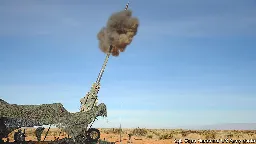
Submission Statement
This article is the second in a series by the Economist focused on lessons learned from the Ukraine war. The articles are written for a layman audience, but even dedicated watchers can derive value from the interviews and novel information sprinkled throughout. I plan on posting them in sequence here, and the full set of 7 articles can be found here.
The war in Ukraine has put electronic warfare in the spotlight, not least because many of the measures and countermeasures being deployed are some of Russia's most effective against NATO weaponry. This article provides an overview of those efforts, as well as NATO's own work to defeat them. Most notable among those are the EW maps that NATO is apparently providing Ukraine 32 times a day--a form of aid I had not heard mention of before.
Shashank Joshi is The Economist‘s defence editor. Prior to joining The Economist in 2018, he served as Senior Research Fellow at the Royal United Services Institute (RUSI) and Research Associate at Oxford University’s Changing Character of War Programme.
>Russian EW was “highly effective” in some areas, concludes the RUSI think-tank. Ukrainian jets initially found that their communications, navigation and radar were all disrupted and in some cases knocked out. The disruption to Excalibur has disturbed some Western officials. But Russia’s land and maritime capabilities have been “lacklustre”, argues Thomas Withingon, an expert analyst of EW. “Our [pre-war] assessment of Russian EW capability was at the pessimistic end of the range,” agrees Edward Stringer, a retired air marshal in Britain’s Royal Air Force. “Russian EW is eminently beatable.”
>In truth, jamming is imperfect and intermittent. One reason is that EW systems are scarce. Russia has been forced to keep some at home to protect cities and bases. Another is that using them comes at a price. Big jammers emit a powerful signal, making them conspicuous targets. Russia has had to pull many of its best ones farther to the rear, says one official. This leaves gaps to exploit. America is providing Ukraine with cuts, or maps, of electromagnetic activity—essentially, the location of jamming and the frequencies used—32 times a day, says T.J. Holland of America’s XVIII Corps. That is a boon to Ukrainian drone operators.
>GPS can also be supplemented with signals from communications satellites in low orbit (like Starlink), ground-based transmission sites (like Russia’s Loran system) and even magnetic-field navigation, suggests Mr. Goward. And as weapons increasingly morph into explosive computers, the line between EW and cyber-attacks is blurring. Andriy, the Ukrainian officer, says Ukraine often inserts malicious code into Russian drones mid-flight.
>EW is ultimately a game of cat and mouse. Russia and Ukraine both seek “electromagnetic supremacy”, says Mr. Withington, but neither can achieve it for good. “Control will ebb and flow throughout the battle.” Jammers will find a way through; defenders will eventually plug the gap. America helped fix the problems with JDAM-ER by ensuring that the bombs acquired a good GPS signal before leaving the plane, according to leaked documents. Excalibur is now hitting its targets again, says a Western official. “In EW, things change very fast,” says Andriy. But the battle must be waged. “In this war, we see that if you do not dominate this domain, you will not be effective in other domains.”
- web.archive.org The war in Ukraine shows how technology is changing the battlefield
But mass still counts, argues Shashank Joshi in the first of seven chapters of a special report on the future of warfare
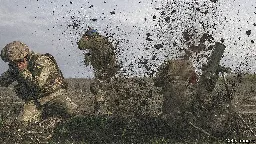
Submission Statement
This article is the first in a series by the Economist focused on lessons learned from the Ukraine war. The articles are written for a layman audience, but even dedicated watchers can derive value from the interviews and novel information sprinkled throughout. I plan on posting them in sequence here, and the full set of 7 articles can be found here.
The first article takes a look at the impacts that new technologies have had on the current state of warfare. Ukraine has taken the reconnaissance-strike complex--sensors, shooters, and the networks that connect them--and elevated it to the level of doctrine. The article itself mentions several times their integration of drones and networking exceeds that of even NATO armies. Thus far, however, the massive leaps in technology and integration have failed to deliver on the lightning-fast, maneuver-dominated warfare promised by the likes of Desert Storm. This has resulted in a debate over the true impacts of wartime technology. I've seen this balance oversimplified in both directions. Users are equally prone to either declaring networked drones the end-all, be-all of weapons technology or concluding they are window dressing on the inevitability of attritional warfare. The author strikes a more nuanced position, noting that precision and the transparent battlefield alternately counter and magnify the effects of mass. Drones, like artillery, are valuable tools in a broader toolkit. Their success or failure on the battlefield ultimately comes down to the ingenuity and willpower of the humans making and wielding them.
Shashank Joshi is The Economist‘s defence editor. Prior to joining The Economist in 2018, he served as Senior Research Fellow at the Royal United Services Institute (RUSI) and Research Associate at Oxford University’s Changing Character of War Programme.
>Ukraine serves as a rejoinder to the idea that technology always trumps mass: that quality can replace quantity. General Sir Patrick Sanders, head of the British army, put it acerbically last year: “You can’t cyber your way across a river.”
>But the paradox of the war is that mass and technology are intimately bound together. Even the artillery war shows this. Weeks before the invasion, America sent Ukraine Excalibur shells. Inside each was a small, rugged chip that could receive gps signals from America’s constellation of navigation satellites. Whereas Russia often relied on barrages over a wide area, Ukrainian gunners could be more precise. Such rounds were “disproportionately effective”, noted a study published by Mr Watling and his colleagues at rusi, drawing on data from Ukraine’s general staff. Not only did they take out targets more reliably; they reduced the number of shells needed, lowering the logistical burden (shells are heavy).
>This digitisation of hardware reflects a collision of old and new ways of war. Much kit Ukraine has received is vintage, such as American howitzers or Soviet missile launchers designed before the Cuban missile crisis, or is stripped of sensitive components. Ukraine is pioneering “the ability to turn it from a dumb piece of cold-war metal into something that’s genuinely networked and part of this algorithmic warfare,” says a foreign adviser in Kyiv. “It is maddening,” noted James Heappey, a junior British defence minister, that “I am providing to the Ukrainians…capability that we’re still years away from getting in the British armed forces.”
>Ukrainian planners, in contrast, waged “data-driven combat” at a level of “speed and precision that nato has not yet achieved”, concludes a report by Nico Lange, a former chief of staff at Germany’s defence ministry. Sometimes that has been down to tools like Kropyva and Delta. Firms such as Palantir, an American tech company, have used cutting-edge ai to help Ukraine find high-value targets. But data-driven warfare can be quietly prosaic, too. A Ukrainian police officer explains that last year his units were locating Russian troops simply by intercepting 1,000 conversations a day (the figure is now higher). If they found a general, the details were shared in an ad hoc WhatsApp group. “We were connected to the people who were literally bombing.”
>Precision warfare can counter some advantages of mass: Ukraine was outnumbered 12 to one north of Kyiv. It can also complement mass. Software-based targeting saves around 15-30% in shells, according to sources familiar with the data. But what precision cannot do, says Michael Kofman of the Centre for Naval Analyses (cna), a think-tank, is substitute for mass. The idea behind the Soviet reconnaissance-strike complex or America’s rma was to win by paralysing the enemy, not wearing him down. But there seems to be no escape from attrition. War on the cheap is an illusion. Many people expected Russia’s invasion to be “a second Desert Storm”, says Andrew Krepinevich, an American defence official who pioneered the idea of the rma in the 1990s. “What we got was a second Iran-Iraq war.”
-
Admiral Michael Gilday and Dr. Kurt Campbell Discuss AUKUS
www.einnews.com CNO Speaks at CSIS AUKUS DiscussionBelow is a transcript of the remarks as delivered: Dr. Charles Edel: Good afternoon. Welcome to the Center for Strategic and International Studies. I'm Charles
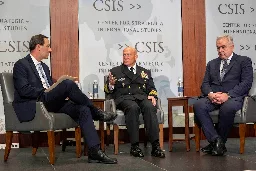
Submission Statement
The United States has embarked upon a wide-ranging campaign to refresh and deepen alliances all across the Indo-Pacific. AUKUS is perhaps the most concrete of those thus far. While its signature accomplishment is the procurement of nuclear submarines for Australia(Pillar 1), the initiative also involves knowledge and technology sharing across a wide spectrum of fields, including quantum and AI(Pillar 2). This interview serves to lay down some of the goals for the AUKUS partnership and
This seems to be a transcript of an actual interview that happened live and was presumably recorded. Unfortunately, I have been unable to find a video of the interview. If someone can find it I would be grateful!
Key Takeaways:
-Interoperability and interchangeability are watchwords for AUKUS programs. The AUKUS submarines will be shared between two nations and will have many components common to US submarines as well.
-The Admiral is still vague on where Virginia class subs that will be sold to Australia will come from. Maybe stockpiles, maybe new production. It sounds very contingent on whether the US shipyards currently building Virginias can hit their targets soon.
-AUKUS Pillar 2(tech sharing) has received interest from a range of nations, and both individuals were open to incorporating other nations based on their ability to contribute to the various fields encompassed.
-The first group of Australian submariners will graduate from the Nuclear Power School this week.
-The spy balloon incident highlighted the lack of military-military channels between the US and China.
-Pillar 2 has already had concrete achievements in AI and UAV technology but is still in a very preliminary stage.
Admiral Gilday is the son of a navy sailor and the 32nd Chief of Naval Operations. A surface warfare officer, he is a graduate of the U.S. Naval Academy and holds master’s degrees from Harvard Kennedy School and the National War College.
Dr. Kurt Campbell serves as the Deputy Assistant to the President and Coordinator for Indo-Pacific Affairs on the National Security Council. He was previously chairman and chief executive officer of The Asia Group.
>AUKUS, as you can tell, is an extraordinarily ambitious program, and we're just beginning to understand the scale of those ambitions. This means investments into our own and our allies' systems, a real linking of Asian and European allies, an integration—to a larger degree—of our industrial capabilities. The ambition of this undertaking has grown commensurately with the scale of the challenge that we are all presented with. AUKUS was undertaken against the backdrop of a deteriorating security environment in the Indo-Pacific region, specifically, centering around the explosive growth of China's military capabilities and the increasingly aggressive use to which those military capabilities are put. Those two trends have heightened security concerns in the region and motivated AUKUS members to begin aligning their strategies and respond to the challenges posed by Beijing.
>We're going to talk today largely about AUKUS. But there's the Quad. There are trilateral engagements that we've undertaken in Northeast Asia. We've sought to build on closer ties with Japan, with South Korea, with the Philippines. You will have seen last week, I think, a pretty substantial diplomatic initiative to open a much closer period of strategic orientation and partnership between the United States and India.
- www.cnas.org “Production Is Deterrence”
Developing strong, pragmatic and principled national security and defense policies.
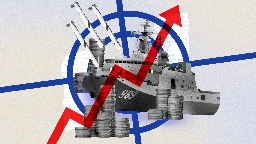
CNAS takes a critical look at the current state of the US munitions stockpile and finds a number of improvements that could improve the volume and stability of the munitions supply chain. While the article itself is a good summary of the findings, the report it is based on is attached at the bottom of the article and is worth looking into as well. It goes into quite a bit more detail, breaking out the status of stockpiles and supply chains for various munitions, as well as comparing the status of those supplies to the goals laid out in NDS 2022.
Stacie Pettyjohn is a Senior Fellow and Director of the Defense Program at CNAS. Her areas of expertise include defense strategy, posture, force planning, the defense budget, and wargaming.
>Ultimately, the state of the industrial base will make or break whether the United States can produce enough weapons to realize the NDS. The war in Ukraine has shed light on serious deficiencies in the United States’ ability to quickly surge production of key weapons. To bolster industry, the DoD is pursuing the multiyear procurement (MYP) and large lot procurement (LLP) programs for several key PGMs. These programs will yield cost savings, but their primary benefit is strategic. MYP and LLP will strengthen the industrial base, providing industry with the stability it needs to expand production capacity. A healthy missiles-and-munitions industrial base enables the United States to counter Russia and will be a powerful deterrent to China.
>Despite the progress that the FY24 budget makes in realizing the NDS by filling in critical gaps in the PGM portfolio, there remain significant shortfalls in stockpile depth and in industrial capacity. The DoD’s inventory of key PGMs, especially standoff weapons, maritime strike PGMs, and air defense interceptors remains too small to blunt an initial invasion, let alone prevail in a protracted conflict against China. It will take years to rebuild American stocks to pre-2022 levels for some of the PGMs given to Ukraine. Moreover, there is a risk that these plans do not come to fruition because of service or congressional pushback against the MYP and LLP programs. More can and should be done to address these deficiencies.
>For the DoD, the authors make the following recommendations:
>>Make key conventional PGMs a separate reporting category and create a process that ensures a joint perspective is taken on key PGMs in each budget cycle.
>>Continue to buy long-range weapons, but also develop more medium-range weapons for the pacing threat. The DoD must seek an affordable mix appropriate for different U.S. delivery platforms.
>>Continue to invest in maritime strike from all domains. The Air Force should follow through on projected buys of the Long-Range Anti-Ship Missile (LRASM) and Joint Strike Missile (JSM). The Army and Marine Corps should accelerate development and procurement of weapons such as the Maritime Strike Tomahawk (MST), the SM-6, and the long-range Land-Based Anti-Ship Missile (LBASM) that increase their ability to project power in the Pacific. Likewise, the Navy should continue to buy the Mk-48 heavyweight torpedo as well as SM-6 multirole missiles.
>>Continue to invest in an integrated and layered system of air defenses that includes a high-low mix that can be purchased in quantities sufficient to counter the Chinese threat. Specifically, the Army needs more of the affordable interceptors intended for air and cruise missile defense.
>>Embrace MYP for key conventional PGMs to provide a consistent demand signal to industry.
>For Congress, the authors make the following recommendations:
>>Mandate that the DoD provides a report on key conventional PGM procurement annually and an assessment of its progress toward its stockpile requirements.
>>Continue to provide supplemental appropriations to support key weapons that will be needed for Ukraine and other allies and partners, which the NDS says are a center of gravity. >>Appropriate funds for the proposed MYP and LLP programs.
>>Consider making MYP for munitions a normal authority, expanding its use, and appropriating funds for these efforts.
- www.nytimes.com In Small Victory, Signs of Grueling Combat Ahead in Ukrainian Counteroffensive
Expecting a quick retreat, a volunteer Ukrainian unit instead faced two days of tough resistance from dug-in Russian forces.
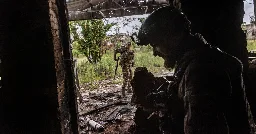
Submission Statement
In addition to being just a genuinely excellent work of journalism, this article possesses both tactical and strategic insights into the war in Ukraine. Tactically speaking, this article is a soft acknowledgment that, despite armored vehicle aid being provided by the West, Ukraine continues to make heavy use of dismounted infantry and small-unit tactics. I'm skeptical of the article's claim that this was intended to keep the movement low profile--judging by the description of the defenses, even a small amount of armor would have been massively helpful in clearing the village quickly. Rather, this is likely a function of limited stockpiles of such vehicles and emphasizes the need for greater mobility aid to be donated by Western partners. Another point of interest is the coordination of soldiers and artillery by drone operators. The operators were the link between soldiers on the ground and their artillery support. Drones and drone operations as the nerve center of the Ukrainian offensive have been mentioned before but I found it interesting that the description given here implies that drones are the key to Ukraine's flexible and responsive reconnaissance/fires complex.
Another tactic mentioned here is artillery-based demining operations. Specifically, the article describes the (probably unguided) artillery barrage as being intended to destroy mines scattered around the outside of the village. While this makes intuitive sense(the pressure from the blast should detonate mines within a certain radius of the shell's impact) I had not heard of this tactic before. On the subreddit, there was a recent question about the feasibility of artillery-based demining and users seemed skeptical of its efficacy. From the way the article describes it, the tactic is at least plausible enough that the Ukrainians attempted it here.
Strategically speaking, the forces described here are interesting. 70 Ukrainian TDF soldiers(plus 20 or so reinforcements) vs. 150 Russians and an unknown number of Storm Z. First off, this is further confirmation that TDF has been mostly subsumed into the broader military structure as opposed to being linked to their home territories. Secondly, the Ukrainians were apparently told to expect 20 or so enemies. It's a major ISR failure that troops walked into a force concentration 10 times that. By all rights, this battle should have been a bloody failure, and I wouldn't be surprised if there are other villages where that was the case. As it was, the attack was stopped in its tracks until developments on the front nearby forced the Russians to leave their position. Tactical intelligence sharing would be massively helpful in these cases. I have no doubt that US ELINT and SATINT would have been more than capable of accurately assessing the force concentrations in the area. It's a low-cost, low-profile intervention that would save Ukrainian lives and enable their offensive operations massively. Frankly, I'm a bit mystified that it's not happening already. Third, this is another blow against the idea that the victories of this counteroffensive are happening in the "grey zone" of the Russian occupation. The Russians are clearly deploying their troops forward of their entrenchments and fighting for every inch of land. That might(emphasis on "might") mean that Ukraine has an easier task ahead of it than those red-line maps imply.
A final, extremely speculative note: the casualty assessment reported here is positive for Ukraine. More than 12 Russian casualties vs. probably about 24 or so Ukrainian casualties (6 dead, 1:3 KIA/WIA ratio) implies that Ukrainians are overperforming the assumption that the attacker takes 3 times as many casualties as the defender. Obviously, this is very speculative. Casualty estimates are always unreliable, especially when talking about such a tiny sliver of the battlefield. There are certainly areas where the ratio is equally lopsided in favor of the Russians. But it's an interesting data point that I wanted to at least mention.
These aren't all the takeaways. I strongly recommend reading through the article as a whole.
>The Ukrainian soldiers thought the Russians would quickly retreat from Neskuchne, a tiny village in southern Ukraine, especially after a concerted artillery barrage and a rocket strike on their headquarters.
>Instead, the Russians dug in, fighting for two days before giving up the village last month, leaving their dead decaying on the roadside and piles of expended ammunition around their makeshift defenses.
>The Russian defeat, on June 9, was Ukraine’s first win in a prolonged counteroffensive that is well into its fourth week but moving at a slower pace than expected. In that respect, the battle for Neskuchne served as an early warning that Kyiv’s and the Western allies’ hopes for a quick victory were unrealistic and that every mile of their drive into Russian-occupied territory would be grueling and contested.
- www.defenseone.com Raytheon Calls in Retirees to Help Restart Stinger Missile Production
The shoulder-fired missile is one of the weapons that’s been credited with getting Ukraine through the early days of the Russian invasion.
Submission Statement
Part of the reason indigenous production is so attractive to countries is that once an assembly line shuts down, it can take significant investment to reopen. Workers develop best practices and optimizations to make their tasks more efficient, many of which are lost when they move on to other positions or retire. At best, losing that knowledge can result in slower production. At worst, a critical unwritten rule can be the difference between a part working or failing. This article provides a good example of the effort required to restart a production line.
Marcus Weisgerber is the global business editor for Defense One, where he writes about the intersection of business and national security.
>Raytheon has called in retired engineers to teach its employees how to build the Stinger missiles heavily used by Ukraine’s military—using blueprints drawn up during the Carter administration.
>It’s the latest example of a private company working to ramp up production of a now-in-demand weapon that the Pentagon hasn’t purchased in decades.
>“Stinger's been out of production for 20 years, and all of a sudden in the first 48 hours [of the war], it's the star of the show and everybody wants more,” Wes Kremer, the president of RTX’s Raytheon division, said during an interview last week at the Paris Air Show.
>When the U.S. Army placed an order for 1,700 Stingers in May 2022, the Pentagon said the missiles wouldn’t be delivered until 2026. Kremer said it will take about 30 months for Stingers to start rolling off of the production line largely because of the time it takes to set up the factory and train its employees.
>On top of that, the electronics used in the missile are obsolete, said RTX CEO Greg Hayes.
>“We're redesigning circuit cards [and] redesigning some of the componentry,” Hayes told Defense One in a June 14 interview. “That just takes a long time.”
>While engineers these days often tout 3D printing and automation as a way to speed up the manufacturing process, that’s not possible with the Stinger—because doing so would not only mean redesigning the weapon, but also undergoing a lengthy weapon certification process.
>“You'd have to redesign the entire seeker in order to automate it,” Kremer said.
>That means they must build the weapons the same way they were built four decades ago: including installing the missile’s nose cone by hand.
-
U.K. Considering Adding Catapults, Arresting Gear to Aircraft Carriers
news.usni.org U.K. Considering Adding Catapults, Arresting Gear to Aircraft Carriers - USNI NewsThe U.K. Royal Navy is studying the introduction of aircraft launch and recovery systems onboard its two Queen Elizabeth-class aircraft carriers to “open up” the flight deck to a broader range of crewed and uncrewed air systems. Speaking at the Defence Leaders’ Combined Naval Event 2023 conference i...
Submission Statement
The shift towards UAVs as wing"men" for pilots was mentioned in a previous submission. Now, the UK seems to be trending in the same direction, looking to add catapult capabilities and a suite of unmanned aircraft to its carrier complement.
Frankly, this seems a bit like a waste, especially when the Prince of Wales remains stranded in drydock with a constantly slipping date for its return to service and dogged by rumors that it is being stripped for parts to sustain its sister ship, the HMS Queen Elizabeth. It's hard to imagine that a handful of bespoke drones(that will likely be competing with F-35Bs for limited hangar space) outweigh the additional capabilities that would be granted by sustaining an additional STOVL carrier. Perhaps the MOD anticipates a sustained surge in funding due to the war in Ukraine, but I'm skeptical of that as well. As the course of the war becomes increasingly well-defined, the risks to the UK will become easier for politicians to brush aside. Any increased funding will have to go toward rebuilding stockpiles before it can be splurged on pricey upgrades.
Richard Scott is a well-known U.K.-based writer on the Royal Navy and other naval forces worldwide.
>The U.K. Royal Navy is studying the introduction of aircraft launch and recovery systems onboard its two Queen Elizabeth-class aircraft carriers to “open up” the flight deck to a broader range of crewed and uncrewed air systems.
>Speaking at the Defence Leaders’ Combined Naval Event 2023 conference in Farnborough on May 24, U.K. Royal Marine Col. Phil Kelly, the head of carrier strike and maritime aviation within the Royal Navy’s Develop Directorate, outlined a plan to retrofit the arresting gear and assisted launch equipment as part of a broader Future Maritime Aviation Force (FMAF) vision. FMAF is a multi-strand program exploring the widespread fielding of uncrewed aviation across the surface fleet, with a specific focus on future carrier aviation.
>In its current configuration, the Queen Elizabeth-class flight deck arrangement – with a 12.5 degree ski-ramp fitted forward and a vertical recovery deck offset to port – has been shaped by the operation and support of a single fixed-wing aircraft type: the F-35B Lightning II short takeoff vertical landing Joint Strike Fighter. No assisted launch or arresting machinery is installed.
>According to Col Kelly, one strand of FMAF – known as Project Ark Royal – is exploring options for the phased introduction of aircraft launch and recovery equipment to enable the operation of high-performance uncrewed strike and support systems, and potentially fixed-wing crewed aircraft.
>“We are looking to move from STOVL to STOL [short takeoff and landing], then to STOBAR [short takeoff but arrested recovery] and then to CATOBAR [catapult-assisted takeoff but arrested recovery]. We are looking at a demonstrable progression that spreads out the financial cost and incrementally improves capability,” Kelly said.
>The first step would be to increase the available length for the unassisted launch of uncrewed air systems.
>“This November we will [launch] a Mojave [STOL] aircraft off the angle of the flight deck off the U.S. east coast,” said Col Kelly. “This aircraft can take off in 300 feet of runway, so enough for the trial, [but] we have already undertaken design work to add sponsons and make a full run of 700 feet available.”
>The next stage would be to introduce a recovery system into the Queen Elizabeth design. The large fixed-wing UAS envisaged under FMAF – a persistent capability known as Vixen – is expected to depend on some form of arrestment for recovery.
>A final step would be to add an assisted launch system. “Adding catapults would allow us to operate the heaviest aircraft you can imagine,” Kelly said.
>USNI News understands that various assisted launch and recovery system options have already been reviewed under Project Ark Royal. These include the Electromagnetic Aircraft Launch System and Advanced Arresting Gear equipment delivered by General Atomics for the U.S. Navy’s Ford-class aircraft carriers, and the U.K.’s own Electro Magnetic Kinetic Induction Technology demonstrator, developed by GE Power Conversion.
>The FMAF plan remains pre-decisional at this stage. The U.K. is continuing to explore capabilities, undertake experimentation and gather evidence in order to inform its next Integrated Review in 2025.
- thestrategybridge.org Trigger-Happy, Autonomous, and Disobedient: Nordbat 2 and Mission Command in Bosnia
In late 1993, a reinforced Swedish-Danish-Norwegian mechanized battalion (Nordbat 2) deployed to Bosnia as part of an ongoing UN peacekeeping mission. The battalion was under Swedish command, and with the exception of a Danish tank company and a Norwegian helicopter detachment, was comprise
Submission Statement
From the Wikipedia article on mission command: Mission command, also referred to as mission-type tactics, is a style of military command, which is derived from the Prussian-pioneered mission-type tactics doctrine, combines centralized intent with decentralized execution subsidiarity, and promotes freedom and speed of action, and initiative within defined constraints. Subordinates, understanding the commander's intentions, their own missions, and the context of those missions, are told what effect they are to achieve and the reason that it needs to be achieved.
While in theory this form of command is widely adopted by Western militaries in practice political objectives and commanding officers' own tendency to micromanage often end up constraining subordinates to narrow courses of action. This article details a particularly salient case where the opposite occurred. NORDBAT2 was able to flaunt political constraints to carry out what it saw as the overarching mandate, contrasting with other UN forces at the time. This is an entertaining read that encapsulates the promise(and perils) of mission command.
Tony Ingesson is currently an Assistant Professor of Political Science at Lund University. His research is primarily focused on the political impact of tactical-decision-making and organizational cultures. He has previously served in the Swedish Army, Air Force and Navy.
>In late 1993, a reinforced Swedish-Danish-Norwegian mechanized battalion (Nordbat 2) deployed to Bosnia as part of an ongoing UN peacekeeping mission, known as UNPROFOR (United Nations Protection Force).[1] The battalion was under Swedish command, and with the exception of a Danish tank company and a Norwegian helicopter detachment, was comprised of Swedish former conscripts, led by active-duty officers. The former conscripts had volunteered to return from civilian life to serve in a professional capacity. These Swedish troops, coming from a nation that had not experienced war for almost 200 years, faced a rigid UN bureaucracy, an unclear mandate, and the UN-imposed rules of engagement bordered on the absurd.[2] However, the Swedes had one thing the others didn't: a culture of mission command that had grown and developed for decades.
>To the surprise of many, even in Sweden, Nordbat 2 quickly established a reputation as one of the most trigger-happy UN units in Bosnia. The troops and officers from some of the least belligerent nations in the world turned out to be quite adept at both using force and playing the odds in a high-stakes political game. This article outlines how a well-entrenched culture of mission command enabled Nordbat 2 to take on completely new and unexpected situations with remarkable results. While this culture of mission command turned out to be a potent force multiplier and an exceptionally effective strategic asset, it also had another side: Nordbat 2 on multiple occasions utterly disregarded orders from its highest political authorities, to the frustration of the Swedish government.
>In "The Language of Mission Command and the Necessity of an Historical Approach," Jörg Muth argues that the U.S. Army needs to understand the culture of mission command in order to implement it.[3] This article provides a brief case study of the tactical and strategic impact of one such culture. While the events described here occurred over twenty years ago, they are as relevant as ever to further our understanding of the strategic role of leadership culture in mission command.
>The most essential component of mission command is trust. As long as political leaders can trust the local commander to make the right choices, mission command can be an incredibly powerful force multiplier. Even though Nordbat 2's first battalion commanders were very unpopular with the Swedish government for their refusal to take orders from home, they were nevertheless greeted as heroes upon their return and remain viewed so to this day. This meant the Swedish government did not have to deal with the political fallout of the otherwise failed UN mission. The Dutch government, for example, was hard-pressed by public opinion after the massacre at Srebrenica in the summer of 1995. In 2002, the entire Dutch government was forced to resign over Srebrenica, after a detailed report blaming the government for the failure was released to the public.
>While unrestrained mission command can be an effective tool, it also requires that political leadership relinquishes a significant degree of control. Thus, to be effectively harnessed in complex operational environments, the culture of mission command is one that has to be understood and to some extent shared by the civilian leadership as well as the military. This approach is clearly not without risk, but in a life-and-death scenario the basic rule of mission command remains relevant: it is better to make a mistake than to do nothing at all.
-
CredibleDefense Megathread
I’m trying this out on a purely experimental basis. Please strive to keep your discussions focused, courteous, and credible. Links to combat footage without significant further analysis will be removed. That sort of footage should be posted to [email protected].
Also, please report things which break the rules! It’s unlikely I’ll see everything that happens in a thread, so reporting is the best way to remove content that doesn’t fit our standards.
The megathread is for asking questions and posting submissions that would not fit the criteria of our post submissions. As such, submissions are less stringently moderated, but we still do keep an elevated guideline for comments. Comment guidelines: Please do:
- Be curious not judgmental,
- Be polite and civil,
- Use the original title of the work you are linking to,
- Use capitalization,
- Link to the article or source of information that you are referring to,
- Make it clear what is your opinion and from what the source actually says. Please minimize editorializing, please make your opinions clearly distinct from the content of the article or source, please do not cherry pick facts to support a preferred narrative,
- Read the articles before you comment, and comment on the content of the articles,
- Post only credible information
- Contribute to the forum by finding and submitting your own credible articles, Please do not:
- Use memes, emojis or swears excessively,
- Use foul imagery,
- Use acronyms like LOL, LMAO, WTF, /s, etc. excessively,
- Start fights with other commenters,
- Make it personal,
- Try to out someone,
- Try to push narratives, or fight for a cause in the comment section, or try to 'win the war,'
- Engage in baseless speculation, fear mongering, or anxiety posting. Question asking is welcome and encouraged, but questions should focus on tangible issues and not groundless hypothetical scenarios. Before asking a question ask yourself 'How likely is this thing to occur.' Questions, like other kinds of comments, should be supported by evidence and must maintain the burden of credibility. Please read our in depth rules https://reddit.com/r/CredibleDefense/wiki/rules. Also please use the report feature if you want a comment to be reviewed faster. Don't abuse it though! If something is not obviously against the rules but you still feel that it should be reviewed, leave a short but descriptive comment while filing the report.
-
Ukraine and Lessons Learned for Airpower and Spacepower
warontherocks.com Ukraine and Lessons Learned for Airpower and Spacepower - War on the RocksThis episode comes to you from Ramstein Air Base, where Ryan spoke with Gen. James Hecker of the U.S. Air Force and Air Marshall Johnny Stringer of the
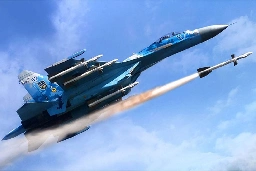
Submission Statement
This 45 minute interview of two senior officers synthesizes some of their takeaways from a NATO meeting regarding lessons learned from Ukraine. Takeaways include:
-Air superiority is key to choking off logistics and ensuring fast victory. Russia failed to achieve this air superiority because of a lack of joint operations and failure to evolve beyond its platforms. Russia's air force's sum was less than its parts.
-Air access--use of air assets strategically in a contested environment for maximum effect.
-Building broad-based counter-A2AD capabilities in NATO is a major priority. Want to avoid brutal artillery slog like in Ukraine.
-Private space power is making access to space cheaper and more important than ever. Starlink has been critical for Ukrainian efforts, but other space capabilities have been important as well. Space is likely to grow more contested--it's key to develop defensive and offensive capabilities in this area. Commercial satellite imaging has democratized access and understanding of the war like never before.
-Low-end munitions(eg drones) + networking blur the line between unmanned systems and precision weapons.
-Collaborative Combat Aircraft will work with F-35s, including those of NATO partners. Idea is still being finalized, may include countermeasures, weapons load, sensors, etc. while being more expendable than a manned aircraft.
-Russians may see their cruise and ballistic missiles as an asymmetric advantage at the moment. A more complex air environment overall demands a more layered approach. Ex: unexpected resurgence of gun-based AD.
-Deeper magazine depths are critical, perhaps more important than being at the absolute cutting edge. Quantity gives leeway in being able to use capabilities more freely.
-Information sharing is another priority. US went from sharing 30 points of interest a month with NATO partners to sharing 3,000 a month with a stroke of a pen. More to be done in other areas, like F-35 info sharing.
-Dispersal of units is getting more focus. The rise of precision munitions means that aircraft must be dispersed across multiple airbases. Locations are changed to remain inside of the enemy's decision cycle.
This is a podcast, if you are looking for a similar resource in text form, I highly recommend RUSI's article "The Russian Air War and Ukrainian Requirements for Air Defence".
>This episode comes to you from Ramstein Air Base, where Ryan spoke with Gen. James Hecker of the U.S. Air Force and Air Marshall Johnny Stringer of the Royal Air Force about what we can learn from airpower and spacepower almost a year and a half into the war in Ukraine.
- www.rand.org The Russian Military's Looming Personnel Crises of Retention and Veteran Mental Heath
Russia's looming troop-retention and veteran-treatment problems are already visible on the horizon, even though they have been delayed by policy. By invading Ukraine, Russia has created a wave of severe trauma that will soon crash over its own country.
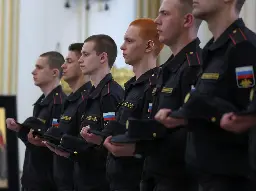
Submission Statement
Russian society has historically failed at reintegrating veterans from their wars of expansion. This article lays out the ways in which the Russian healthcare system is failing veterans of the Ukraine War with trauma or injuries, and the possible long-term impacts of their inability to do so. There are also a few notes on the exact dynamics of Russia's partial mobilization which I had not known before, including that soldiers cannot be discharged are death, retirement, imprisonment, or medical discharge. In other words, contract soldiers whose deadlines for service have expired are being forced to fight on, which cannot be good for morale.
The author notes an interesting line taken by Russian propaganda by tying their service to WW2 imagery. This kind of framing is likely to be ineffective, given that many of those currently returning from the frontlines are former prisoners now terrorizing their communities. I would not be surprised if the negative connotations spread from these prisoners become the dominant stereotype of Russian veterans as a whole, further exacerbating the negative social effects described.
Dara Massicot is a senior policy researcher at the RAND Corporation. Before joining RAND, she served as a senior analyst for Russian military capabilities at the Department of Defense.
>Much attention in recent months has focused on Russia's faltering military offensive and staggering casualties in Ukraine. But there are other problems, largely unnoticed outside Russia, lurking for the country's armed forces and society more broadly. Russia's wartime military-personnel policies, instituted last September, temporarily prohibit active-duty and mobilized soldiers from leaving service. Russia faces a crisis in military retention and a larger social crisis of veteran mental-health disorders when these restrictions are lifted. Just as the terms “Afghan Syndrome” and “Chechen Syndrome” emerged to describe the plight of Russian veterans who lacked support and struggled to adapt to civilian life after those conflicts, it is only a matter of time before “Ukraine Syndrome” grips Russia, as thousands of veterans suffering from posttraumatic stress disorder (PTSD) or other conditions return home.
>Indefinite deployment and inadequate rest and rotation, due to a shortage of soldiers, mean that Russian soldiers endure prolonged exposure to combat stress, which intensifies feelings of resentment and helplessness. When these restrictions are lifted, and they will have to be eventually, the army could face large-scale resignations among officers and other professional soldiers, including those whose contracts expired while fighting in Ukraine. The mood among Russian troops in Ukraine is not easy to gauge, but anecdotal evidence—from social media, intercepted phone calls to families, officer accounts, and other sources—suggests that many are likely to resign as soon as it becomes possible.
>Russian forces have sustained more casualties in the past 16 months than in a decade of war in Afghanistan in the 1980s or two campaigns in Chechnya in the 1990s. Casualty estimates vary, from official Russian numbers from late last year (just under 6,000 killed in action), to more than 23,000 confirmed military funerals, according to the BBC and Mediazona, to Western military estimates of 40,000–60,000 killed in action with 100,000–140,000 wounded. The higher estimates are staggering figures, with enormous implications for the future of Russian military power and for Russian society.
>The Russian medical system is already straining, even though most Russian soldiers are still deployed. Many hospitals are overwhelmed with the wounded. Some of those experiencing severe psychological trauma are discharged untreated.
>Spending money on prosthetic limbs and psychiatrists is one thing, creating the right environment for treating PTSD quite another. Russian law was recently changed to criminalize statements seen as discrediting the armed forces. This could discourage returning troops from discussing their wartime traumas candidly, impeding their recovery. Russian authorities are using second-world-war iconography to cast veterans as heroes or liberators, but it is unclear if these efforts will lead to less social alienation than that experienced on their return by soldiers who fought in Afghanistan and Chechnya. Symptoms of untreated combat trauma include increased risk of criminal behavior, substance abuse, domestic violence, and problems at work. These issues will be felt all across Russia when the soldiers return home. The domestic prestige of the armed forces, badly dented in the wake of those earlier conflicts, will once again be at risk.
-
Prigozhin as Pugachev or Pilgrim: The Wagner Rebellion in Historical Context
warontherocks.com Prigozhin as Pugachev or Pilgrim: The Wagner Rebellion in Historical Context - War on the RocksAs with many War on the Rocks readers, I was taken aback by the events of June 23rd to 25th in Russia. This weekend I had the distinct pleasure of
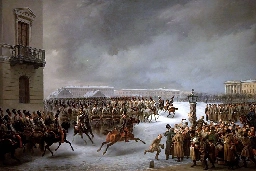
Submission Statement
There's been a lot of discussion about Prigozhin's abortive uprising--probably too much if we're honest. However, I found this article by Alexander Burns still worth sharing. the article is a high-level contextualization of Prigozhin's coup and a comparison of its current state to possible historical analogs. Before reading this article I had been falling into the trap of comparing Prigozhin's rebellion to Soviet political machinations, or to the tsardom that preceded the USSR. However, I was convinced by the historian's argument that the rebellion bore more resemblance to feudal-era coups, and that's the comparison I think I'll lean toward in the future. The aftermath of the Pilgrimage of Grace in particular I think is very relevant here, especially given recent reporting that the criminal case against Prigozhin has not been dropped.
Alexander S. Burns is an assistant professor of history at the Franciscan University of Steubenville, studying the American Continental Army’s connection to European militaries. His edited volume, The Changing Face of Old Regime Warfare: Essays in Honour of Christopher Duffy, was published in 2022. You can follow him @KKriegeBlog.
>Part of what held our attention stemmed from surprise. How could Putin’s Russia, a state famously run prioritizing loyalty over competence, be facing a coup? My doctoral advisor, Professor Katherine B. Aaslestad, had the answer. Before her passing in 2021, she constantly reminded her lecture halls and graduate seminars: “Regimes that choose war rarely achieve their goals at the outset. War has a way of changing the situation. War takes on a life of its own.” She most frequently said this in the context of the wars of the French Revolution, but it is the case across military history. While Spartan King Archidamus and Athenian Pericles reluctantly led Sparta and Athens into the Peloponnesian War in 431 BC, neither was alive in 404 when the war ended. The political landscape had been totally reshaped by war, reshaping each side’s goals and objectives with it. We can observe a similar change in Russia today.
>Despite all of the possible parallels in Russian history, I believe that the most interesting parallel to the current situation is the Pilgrimage of Grace, a rebellion during Henry VIII’s reign in England.
>In October of 1536, Catholic believers in the North of England rose in revolt against the church reforms of Henry VIII. Although their motivations were economic and religious, important similarities between these peasants and Prigozhin exist. They called their rebellion the Pilgrimage of Grace, trying to disguise it as a military movement. They insisted that their grievances lay not with the actions of the king, but with “persons of low birth and small reputation” who were, they claimed, advising him poorly.
>Knowing that it would be difficult to stop the pilgrim army, which numbered in the tens of thousands, Henry VIII’s government chose to negotiate. The pilgrims were promised immunity, that a special parliament would meet and address their grievances, and that the king would agree to their immediate demands until the parliament met. Seizing upon a pretext to abandon this pledge, forces loyal to Henry then suppressed a new uprising and executed around two hundred leaders of the initial rebellion.
>There are many similarities between Prigozhin’s uprising and the Pilgrimage. Prigozhin referred to the events of June 23rd to 24th as “марш справедливости” or “the March for Justice,” rather than a coup. He insisted that Russian Defense Minister Shoigu, not Putin, was at fault for the failures and that they deliberately misled Putin. Like the Pilgrimage of Grace rebelling against the “evil councillors” of Henry VIII, Prigozhin cloaked a formidable military effort to destabilize the state in language that suggested loyalty to the monarch. Likewise, once the initial emergency had passed, both Henry VIII and Putin appeared all too eager to change the terms of the deal. Although it initially seemed that Putin might have caved to Prigozhin’s demands for Shoigu’s removal, Putin appeared alongside his defense minister in a meeting on June 26th.
>What comes next? I’ve previously argued that Prigozhin reminds me of a Freikorps Inhaber rather than Prince Wallenstein, and his possible fate of Belarussian exile reminds me of the story of Polish Prince Jerzy Marcin Lubomirski, a mercenary commander who had to stay one step ahead of his former employers. So where does this leave us? I’ll admit to being quite surprised by these developments, and echo my comments that historians should be historians, not ersatz policy commentators and predictors. History provides a range of possibilities from which to understand the present, and in history, unlike Putin’s Russia, we know where we are in the story. With that said, although cracks are appearing in the foundation of Putin’s Russia, Prigozhin will be lucky to avoid the fate of Pilgrimage of Grace leaders like Sir Robert Aske, who was hung in chains.
- www.cnas.org Artificial Intelligence and Arms Control
Developing strong, pragmatic and principled national security and defense policies.
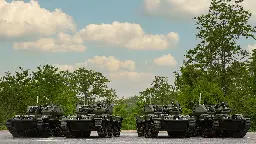
Submission Statement
Though this paper focuses on arms control through the lens of AI-enabled measures, I found it a useful primer on the dynamics of arms control more generally. While I don't believe AI meets the six criteria to be amenable to regulation, I can see a path for certain AI applications to be regulated via treaty. For example, mandates requiring a man-in-the-loop or man-on-the-loop seem to minimally disrupt weapon effectiveness, while greatly limiting the disruptive nature or "horribleness" of autonomous killers.
Paul Scharre is the Executive Vice President and Director of Studies at CNAS. He is the award-winning author of Four Battlegrounds: Power in the Age of Artificial Intelligence. Megan Lamberth is a former Associate Fellow for the Technology and National Security Program at CNAS. Her research focuses on U.S. strategy for emerging technologies and the key components of technology competitiveness, such as human capital, R&D investments, and norms building.
>Watts identifies six criteria that he argues affect a weapon’s tolerance or resistance to regulation: effectiveness, novelty, deployment, medical compatibility, disruptiveness, and notoriety.11 An effective weapon that provides “unprecedented access” to enemy targets and has the capacity to ensure dominance is historically resistant to regulation. There is a mixed record for regulating novel weapons or military systems throughout history. Countries have pursued regulation of certain new weapons or weapons delivery systems (e.g., aerial bombardment) while also resisting regulation for other novel military systems (e.g., submarines). Weapons that are widely deployed—“integrated into States’ military operations”—tend to be resistant to arms control. Weapons that cause “wounds compatible with existing medical protocols” in military and field hospitals are historically difficult to ban or regulate. Powerful nations have historically tried to regulate or ban weapons that are “socially and militarily disruptive” out of fear that such weapons could upend existing global or domestic power dynamics. Campaigns by civil society groups or widespread disapproval from the public can increase notoriety, making a weapon potentially more susceptible to arms control.12
>Whether arms control succeeds or fails depends on both its desirability and its feasibility. The desirability of arms control encompasses states’ calculation of a weapon’s perceived military value versus its perceived horribleness (because it is inhumane, indiscriminate, or disruptive to the social or political order). Thus, desirability of arms control is a function of states’ desire to retain a weapon for their own purposes balanced against their desire to restrain its use by their adversaries.
>AI technology poses challenges for arms control for a variety of reasons. AI technology is diffuse, and many of its applications are dual use. As an emerging technology, its full potential has yet to be realized—which may hinder efforts to control it. Verification of any AI arms control agreement would also be challenging; states would likely need to develop methods of ensuring that other states are in compliance to be comfortable with restraining their own capabilities. These hurdles, though significant, are not insurmountable in all instances. Under certain conditions, arms control may be feasible for some military AI applications. Even while states compete in military AI, they should seek opportunities to reduce its risks, including through arms control measures where feasible.
- warontherocks.com Securing Zaporizhzhia with Diplomacy and Deterrence - War on the Rocks
The destruction of Ukraine’s Kakhovka dam on June 6 has exacerbated concerns over the safety of Europe’s largest nuclear power plant. To cool its six

Submission Statement
The destruction of the Kakhova Dam earlier this month has resulted in renewed anxiety that Russian occupation may result in the destabilization or destruction of Ukraines nuclear power infrastructure. Damage done to the Zaporizhia nuclear power plant's facilities and Russia's continuing choice to use said plant as a base for military operations raises the specter of a nuclear disaster that could spread radiation across a broad swathe of Europe. Such an event could result in the triggering of Article 5, the collective defense clause of the NATO alliance. This article details possible Western policies that could decrease the likelihood of such an event occurring. Appealing to Russian economic interests as a major supplier of nuclear power infrastructure is an angle I had not considered before.
>Ultimately, the only sustainable resolution to the threats facing the ZNPP is the withdrawal of Russian troops and personnel from the plant and the return of the facility to Ukrainian authorities. In the meantime, though, Ukraine’s partners should pursue four lines of effort to help to prevent a radiological incident at the plant.
>First, pressure should be placed on Russian authorities and Rosatom management at the ZNPP to grant the International Atomic Energy Agency all requested access. This is critical to enable the agency to continue regular reporting on the status of the ZNPP’s operations — including the state of water levels and key support systems. While the agency may not always wish to publicize key thresholds, it should continue to warn of critical developments and correct alarmist narratives. The agency should also be empowered to report on any denial of access or failures to cooperate. While water supply remains a concern, it is also important that the agency consider and report on ways to minimize water usage at the plant. This should include exploring options for moving ZNPP’s unit five reactor from hot to cold shutdown as soon as this can be safely done.
>Second, diplomatic pressure should be applied to create a deconfliction mechanism between the Ukrainian and Russian militaries to allow for the continued supply of water, diesel fuel, emergency equipment, and spare parts, as well as the rotation of workers and International Atomic Energy Agency personnel. This could be supervised by international observers who could identify any disruptions and establish responsibility for them. Moscow places considerable strategic and economic importance on its civilian nuclear sector and exports. With this in mind, appealing to Russia’s desire to maintain its reputation as a responsible nuclear operator may be one admittedly imperfect way of incentivizing cooperation. Stressing the damage that a radiological incident could have on the global nuclear sector and demands for the construction of new nuclear facilities worldwide might also help motivate Russia to keep the ZNPP operating safely.
>Third, Ukraine’s partners should make clear to Russia that it does not stand to benefit from engineering — or carelessly permitting — an accident at the ZNPP. Russia does not want further involvement in the conflict from Ukraine’s partners and may calculate that a radiological incident would act as a deterrent or result in pressure on Ukraine to negotiate. Kyiv’s partners should stress to Moscow that they would respond to a radiological incident at the ZNPP by providing Ukraine with more — not less — support. The precise nature of that support would need to be negotiated among Ukraine’s allies and with Kyiv to ensure that it is credible.
>Fourth, the attractiveness of manufacturing a radiological incident could be further decreased by reducing its likely impact on Ukrainian military forces. This could be achieved by providing them chemical, biological, radiological and nuclear training and equipment to ensure that they have the right capabilities to respond to the situation. Czechia, Germany, and the United Kingdom, in particular, have considerable expertise in this area. By collaborating to provision and train Ukrainian forces, they could help to convince Russia that there would be little military utility in causing or allowing an accident at the ZNPP.
-
Why Did the United States Invade Iraq? The Debate at 20 Years
tnsr.org Why Did the United States Invade Iraq? The Debate at 20 Years - Texas National Security ReviewTwenty years after the Iraq War began, scholarship on its causes can be usefully divided into the security school and the hegemony school. Security school scholars argue that the main reason the Bush administration decided to invade Iraq was to safeguard the United States against the conjoined threa...
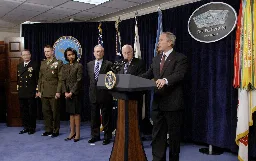
"War is the continuation of policy with other means."
Clausewitz's statement may be so broadly accepted as to be a truism, but the forces and motives which drive a nation to go to war remain topics of great debate and study. Many wars not only fail to advance a nation's goals but actively undermine or defeat them entirely. The 2002 invasion and subsequent occupation of Iraq sit within those ranks, having sapped US soft and hard power while delivering benefits that were questionable at best. Given its recency and cultural cachet, a number of thinkers have tried to discern the precise concerns that led the US to conclude that invading Iraq was necessary to achieve its policy goals. This article provides a useful summary of two of those camps, those that believe the US was motivated by concerns over its security, and those who believe it was driven by a desire to protect US hegemony. It makes an attempt at synthesizing the two schools and speaks to the implications of each interpretation on US policy. Finally, the authors call for broader and more culturally/globally inclusive scholarship on the war.
This article is an excellent resource for readers of all stripes. For novices, this is an excellent birds-eye view of the current state of Iraq War scholarship. Those who already have a strong inclination toward one of the two schools described will find valuable sources for broadening and adding depth to their understanding.
>This article maps out the debate on the Iraq War’s origins as they have developed over the last 20 years. It aims to play honest broker between competing schools of thought, clearly laying out their interpretations, assessing points of tension, and factoring in the influences of politics and ideology on scholarship. Below, I will show how divergent interpretations of the war have emerged from the different lenses, methodologies, and objectives that scholars have brought to the table.
>No single article can tackle every aspect of Iraq War scholarship. Thus, this essay focuses on three questions that are essential for explaining the war’s origins but that continue to divide scholars. First, was the Bush administration’s decision to invade Iraq driven more by the desire for security or the pursuit of primacy? Second, was the Bush administration’s decision to pursue “coercive diplomacy” in the fall and winter of 2002–2003 a genuine attempt to avoid war or a means to legitimize a decision for war made earlier in 2002? Third, how much did neoconservatives matter in the making of the Iraq War?
>The first question — security vs. hegemony — constitutes the primary point of scholarly disagreement about the Iraq War. Security-focused explanations like those found in Leffler’s new book argue that the Bush administration’s primary motive was protecting the nation from future terrorist attacks in the transformed, post-9/11 environment in which threats like Iraq had to be re-evaluated.2 Scholars in the hegemony school like Ahsan Butt argue, in contrast, that the Bush administration used 9/11 and the threat of Iraqi weapons of mass destruction as a pretext to justify a war that was motivated primarily by the desire for regional and/or global hegemony.3 Other important questions flow from this security-hegemony divide, including the nature of Bush’s coercive diplomacy strategy and the role of neoconservatives in causing the war.
>A few caveats: This essay does not defend the existence of the security-hegemony divide nor take sides in this debate. Instead, it seeks to explain its parameters, evolution, and stakes. Some may object to this depiction of two broad interpretive camps as oversimplifying a vast body of nuanced scholarship. To address this problem, this article tries to identify possible means of synthesizing these interpretations. The security and hegemony camps do overlap in some ways, as discussed below, but this divide also reflects that scholars themselves have identified genuine differences about what set of factors drove the causal boat. Finally, this essay concludes with a plea for more global and cultural analysis of the Iraq War as a way to challenge this binary.
>In sum, competing interpretations of the war’s origins are entwined with debates about its lessons. It is proper that scholars contest how this war should inform the future of U.S. foreign policy. Nonetheless, partisans in this debate risk filtering history through ideological prisms and using it to win arguments. Still, this article suggests that even as the United States refocuses toward great-power competition, the meanings and lessons of the Iraq War remain hotly contested and highly consequential for America’s global role. This is especially true as the generation that fought the Iraq and Afghanistan wars enters leadership positions in the military and politics. Their interpretations of that conflict will matter immensely for how they think and act, just as competing viewpoints about the Vietnam War mattered for that generation.
-
Vladimir Putin’s generals vulnerable despite surviving revolt
www.ft.com Subscribe to read | Financial TimesNews, analysis and comment from the Financial Times, the worldʼs leading global business publication
Submission Statement
Top leadership is under particular scrutiny during any war effort, and Russia's invasion of Ukraine is no different. Sergei Shoigu(Russia's defense minister) and Valery Gerasimov(commander of Russia's forces in Ukraine) have received particular scrutiny for their roles in the Russian military's failures in Ukraine. This scrutiny escalated into crisis when Denis Prigozhin marched towards Moscow with Wagner PMC, allegedly as a response to failures by Shoigu and the MOD in Ukraine. This article by FT examines the fallout and immediate implications for Shoigu and Gerasimov in the wake of this attempted insurrection. Quotes from Dara Massicot and an anonymous insider provide valuable prognostication about the immediate future of the two. I was particularly struck by the point Massicot made, that(at least in the short term) Putin dismissing either of the two would be seen as having terms dictated to him by Prigozhin. It may be the case that this coup attempt has actually made it more likely that Shoigu and Gerasimov will continue in their positions, regardless of their lack of performance.
Max Seddon is the Moscow bureau chief at FT. Dara Massicot is a senior policy researcher at RANDCorporation focusing on defense issues in Russia.
>There was no sound on the brief video of Sergei Shoigu published on Monday morning or any indication of where Russia’s defence minister was as he pored over a battlefield map.
>But the seemingly mundane footage was the first evidence that Shoigu was still in his job. Neither he nor Valery Gerasimov, commander of Russia’s invasion force, have been seen in public since Yevgeny Prigozhin launched an extraordinary coup attempt to oust them on Friday.
>“Shoigu and Gerasimov are so bad in their jobs that it’s dangerous to Putin to leave them in place,” said Dara Massicot, a senior political scientist at the US-based Rand Corporation. “But loyalty and stability are number one for Putin. I just don’t see how he’s going to have these terms dictated to him like this.”
>“Shoigu and Gerasimov are now obvious lame ducks and they will be removed, I think,” said Ruslan Pukhov, director of the Centre for Analysis of Strategies and Technologies, a Moscow-based defence think-tank. He did not exclude the possibility that the two men’s departure could have been part of the brokered deal that led to Prigozhin standing his men down. The Kremlin has denied this.
>The damage to Russia’s prestige has been such that even pro-war commentators on state television and social media admit that the coup called the entire war into question.
>“This is a serious blow to the authority of the country and the authority of the president,” Karen Shakhnazarov, a Kremlin-linked film director, said on a popular online livestream show. “There was a feeling here that everything was unshakeable, and that turned out not to be the case.”
>The reception Wagner’s men got in Rostov shows the popularity of Prigozhin’s tirades against the army leadership. On Saturday morning, when Prigozhin demanded a face-off with Shoigu and Gerasimov, Vladimir Alekseyev, deputy head of Russian military intelligence, laughed: “Take them!”
>When Wagner left the southern city that was the launch pad for the coup, crowds waved, cheered and took selfies with Prigozhin — but booed the security forces who came to replace them.
>Though Putin publicly backed Shoigu’s efforts, Prigozhin vehemently refused — conscious of the damage such an arrangement would do to his standing as a powerful warlord who answered only to Putin, according to a person who has known him since the 1990s.
>“He understands fully well that if he turns into a zero, then Shoigu would have dealt with him at some point. So he went all out and decided to show Putin that he’s the only real one out there and he needs to be left alone with his money,” the person said. “He got it a bit wrong, and everything went to shit, as it usually does [in Russia].”
>Putin’s biggest mistake, Rand’s Massicot said, was to give Shoigu his backing without finding an acceptable way for Prigozhin to save face.
>“When he threw his support behind the defence ministry, it basically put a target on Prigozhin’s back,” she said. “A competent statesman would have reached out to offer Prigozhin an incentive, or something to buy him off. Clearly, that wasn’t done.”
>With Prigozhin now in exile, Shoigu’s position could even be strengthened, according to the person who knows the warlord — as Putin will see no reason to fire a loyalist.
>“Shoigu’s the only winner,” the person said. “He’ll be the defence minister forever.”
- www.foreignaffairs.com Prigozhin’s Rebellion, Putin’s Fate, and Russia’s Future
A conversation with Stephen Kotkin.
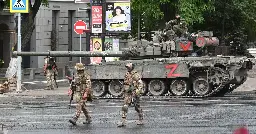
Submission Statement
Stephen Kotkin is a highly respected Russian historian. This interview did an excellent job situating Prigozhin's insurrection within the broader context, both in terms of Russian history and the war effort as a whole. I was particularly struck by the comparison of this to 1917, where security measures taken to stabilize the country unintentionally accelerated its collapse.
Stephen Mark Kotkin is an American historian, academic, and author. He is the Kleinheinz Senior Fellow at the Hoover Institution and a senior fellow at the Freeman Spogli Institute for International Studies at Stanford University.
Key points:
Prigozhin is improvising, but his successes have already changed the game.
Social media is a massive X-factor for modern governance. This coup was executed more on smartphones than on the streets.
Instability is being watched closely by all powers, but especially China.
Allowing an alternative to arise was a colossal mistake, not what Kotkin expected from Putin.
Ukraine is presently ill-positioned to take advantage of Russian instability, but that could change as rifts in the Russian military/government continue to deepen.
Right now, Western powers need to stay out, lest Putin paint Prigozhin as a Western puppet.
